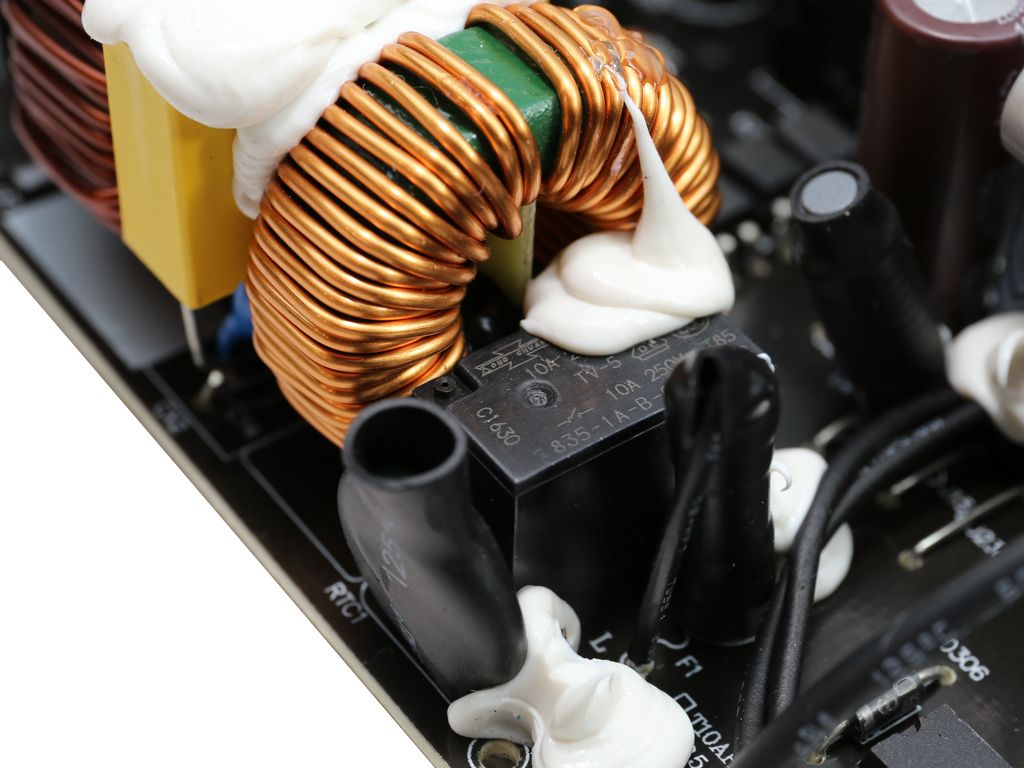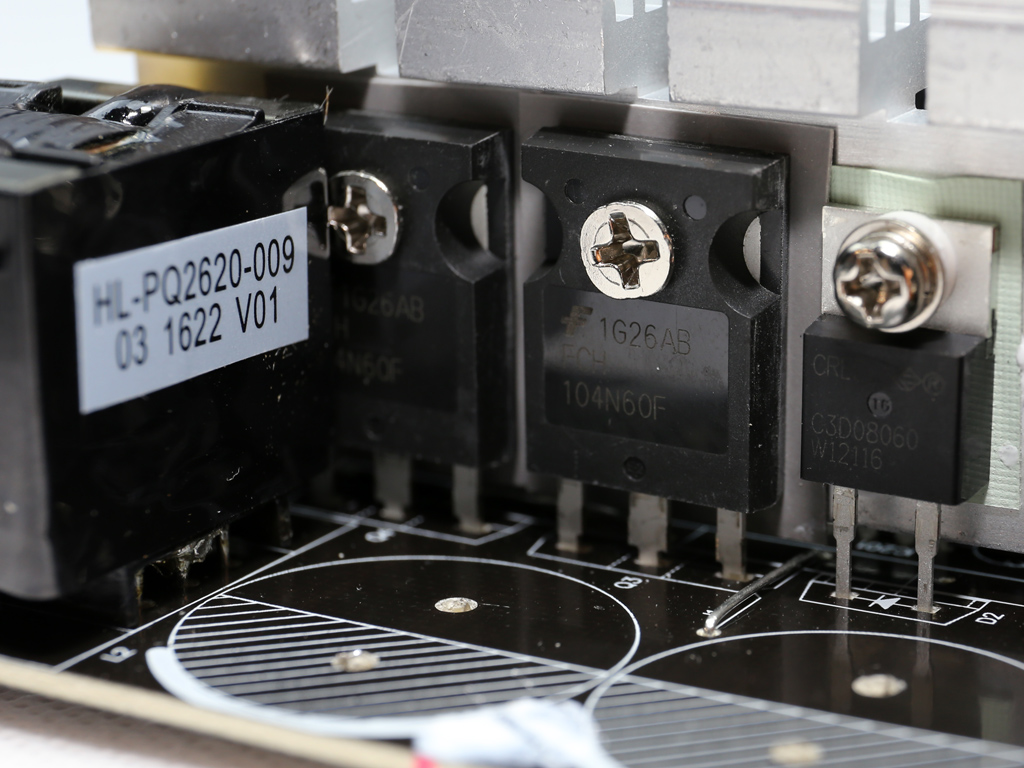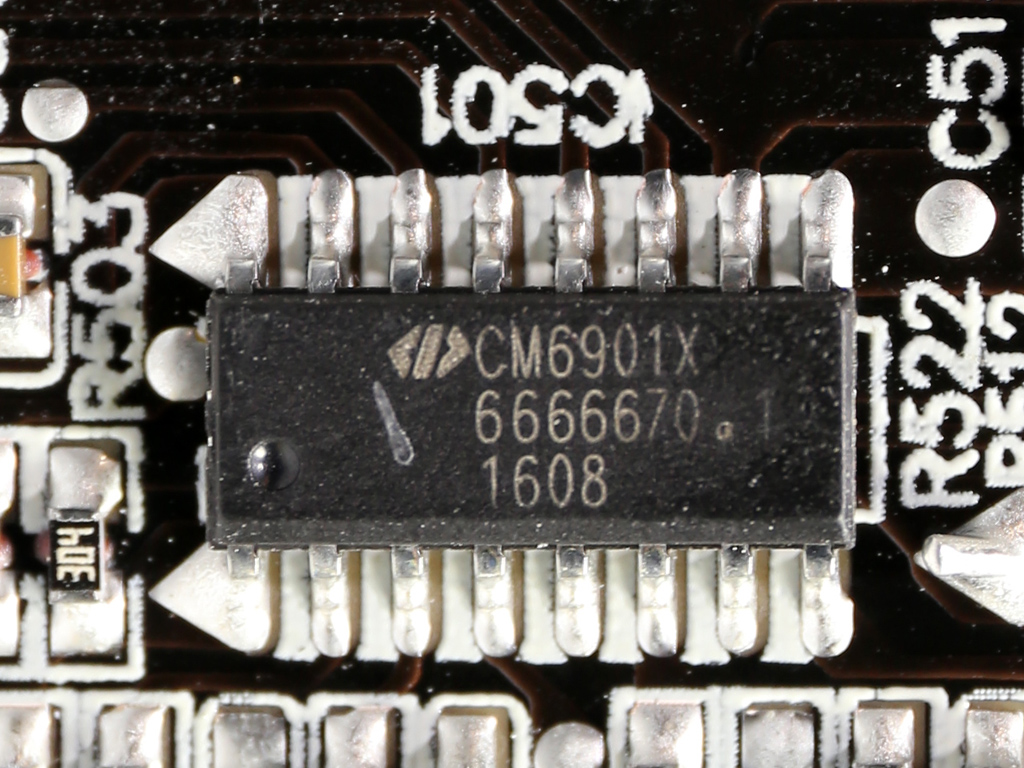Riotoro Enigma 850W PSU Review
Riotoro is a newly founded company that's currently involved in the PSU, chassis, cooling, and gaming peripheral markets. It only has two PSU lines with three total members, and today we're looking at the Enigma 850W, its flagship offering.
Why you can trust Tom's Hardware
A Look Inside And Component Analysis
Parts Description
Before proceeding with this page, we strongly encourage you to a look at our PSUs 101 article, which provides valuable information about PSUs and their operation, allowing you to better understand the components we're about to discuss. Our main tools for disassembling PSUs are a Thermaltronics soldering and rework station, and a Hakko FR-300 desoldering gun. Finally, for the identification of tiny parts we use an Andonstar HDMI digital microscope.
| General Data | |
|---|---|
| Manufacturer (OEM) | Great Wall |
| Original Platform | GW-ATX850BL |
| Primary Side | |
| Transient Filter | 4x Y caps, 2x X caps, 2x CM chokes |
| Inrush Protection | NTC Thermistor & Diode |
| Bridge Rectifier(s) | 2x GBU1508 (800V, 15A @ 100°C) |
| APFC MOSFETs | 2x Vishay SIHG33N60E (650V, 21A @ 100°C, 0.099Ω) |
| APFC Boost Diode | 1x CREE C3D08060A (600V, 8A @ 152°C) |
| Hold-up Cap(s) | 2x Rubycon (400V, 390uF each; 780uF combined, 85°C, USG) |
| Main Switchers | 2x Fairchild FCH104N60F (650V, 24A @ 100°C, 104mΩ) |
| APFC Controller | Champion CM6500 & CM03AX Green PFC controller |
| Switching Controller | Champion CM6901X |
| Topology | Primary side: Half-Bridge & LLC Resonant Converter Secondary side: Synchronous Rectification & DC-DC converters |
| Secondary Side | |
| +12V MOSFETs | 4x A-Power BV6N19 |
| 5V & 3.3V | DC-DC Converters: 4x AP0403GH FETs (30V, 50A @ 100°C, 4.5mΩ) PWM Controller:1x APW7159C |
| Filtering Capacitors | Electrolytics: Elite (3-5,000 @ 105°C, EJ), Teapo (3-6,000h @ 105°C, SY), 2x CapXon (105°C), 1x Chemi-Con (105°C, KY) Polymers: Chemi-Con, 2x FPCAP (VRMs), 2x CapXon* , 2x Elite* *Modular PCB |
| Supervisor IC | Sitronix ST9S429-PQ14 (OVP, UVP, OCP, SCP, PG) & AS358 (Dual Op-Amp) |
| Fan Model | Hong Hua HA1425L12F-Z (140mm, 12V, 0.22A, 1800 RPM) |
| 5VSB Circuit | |
| Rectifier | 1x PFC PFR30L45CT SBR (45V, 30A) |
| Standby PWM Controller | Power Integrations TinySwitch-III TNY278PN |
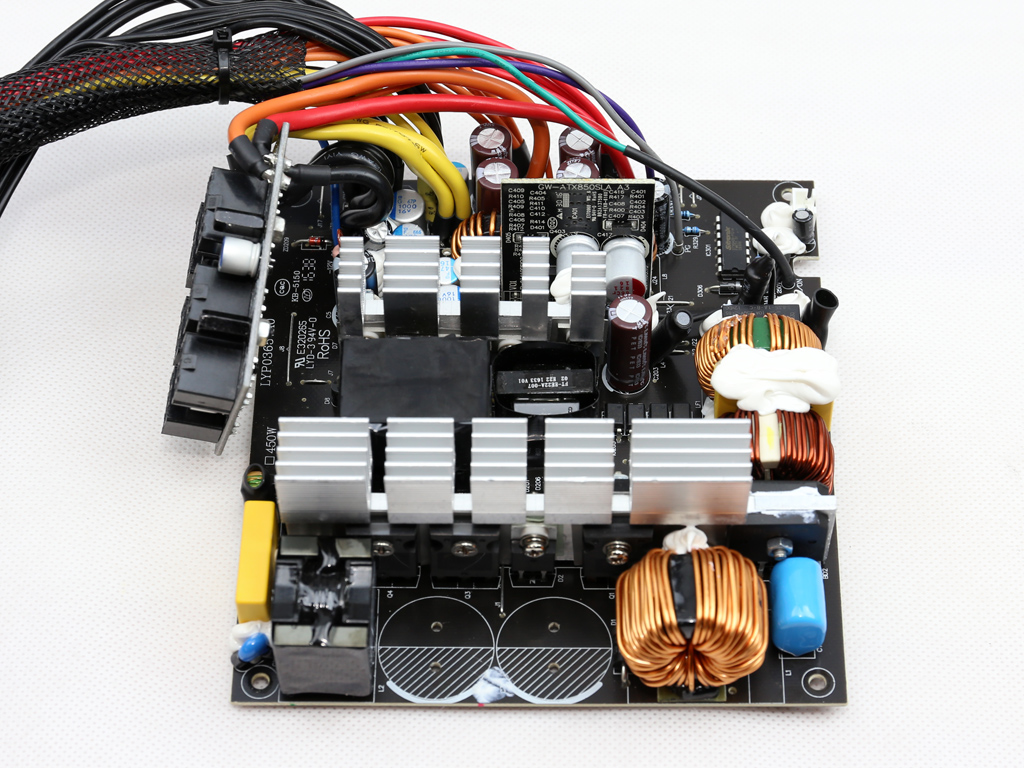
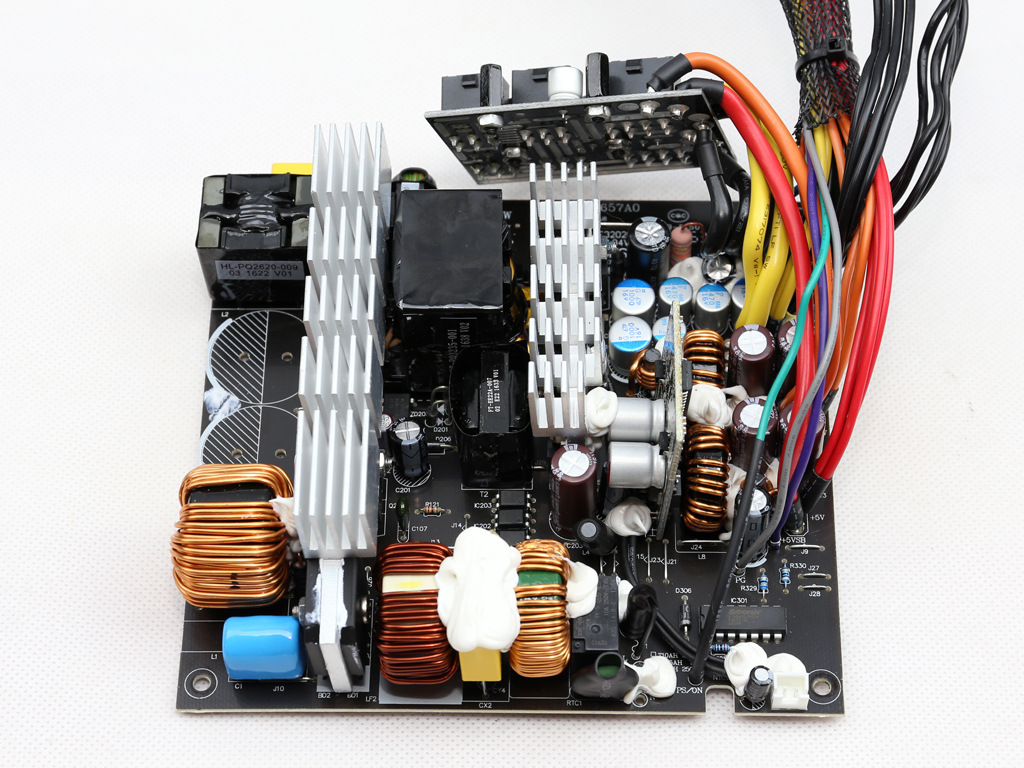
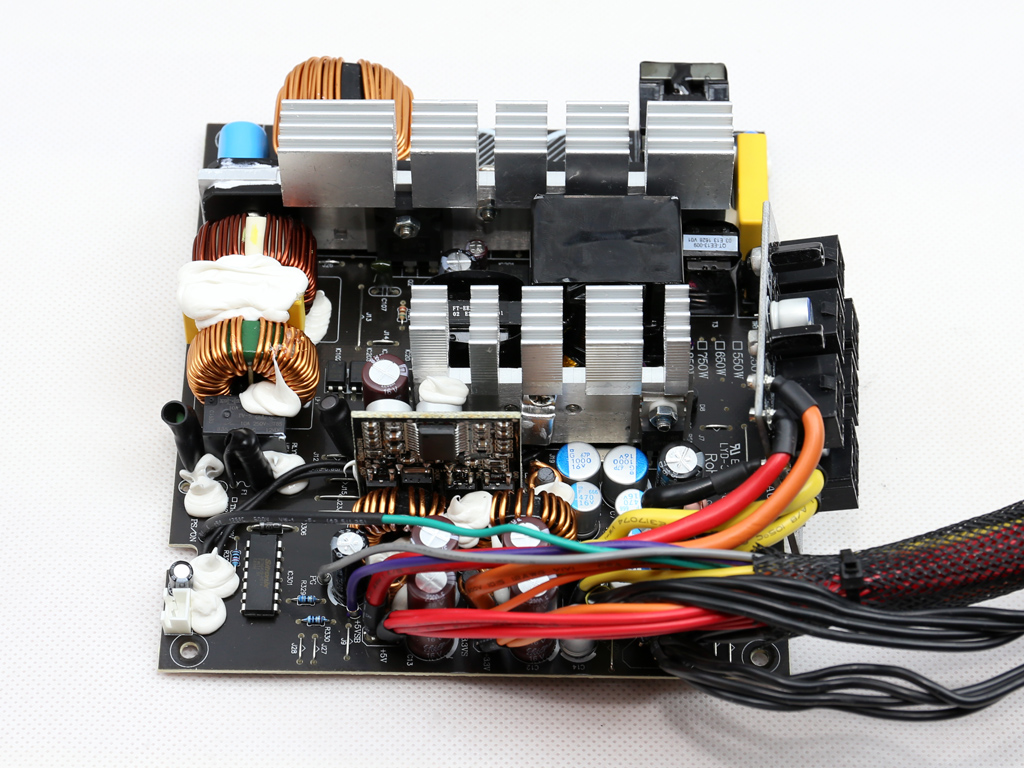
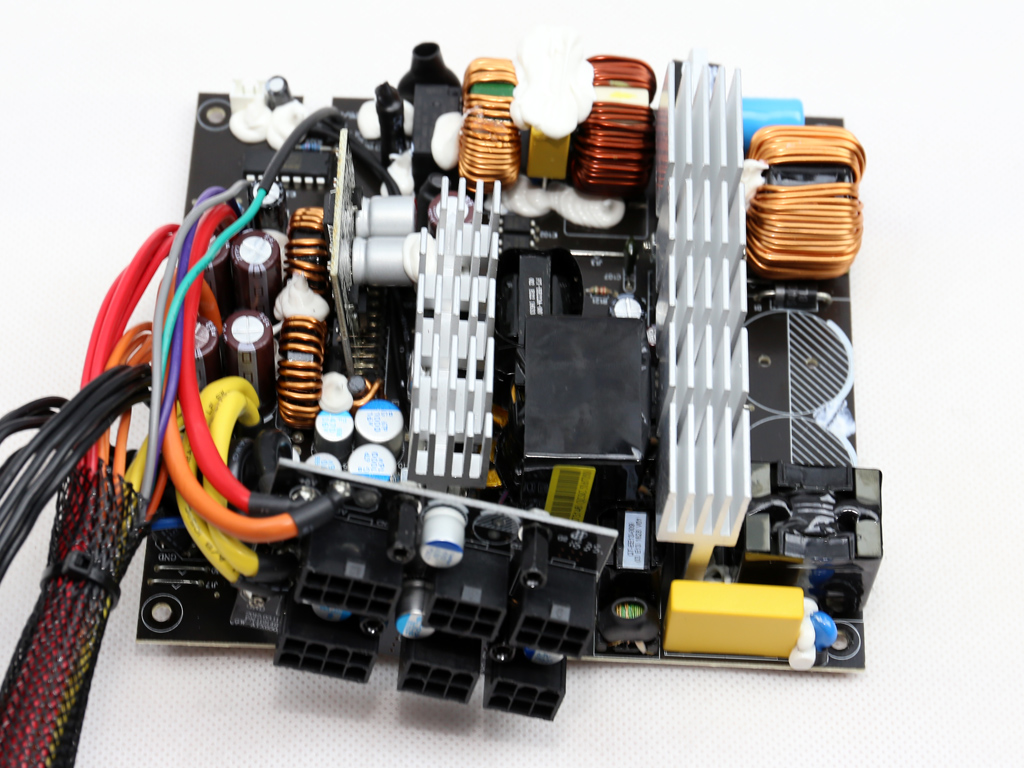
This platform is provided by Great Wall and it is exactly the same as the one used for Corsair's CS850M. The quality of the bulk and filtering caps isn't particularly high, since GW uses 85°C bulk caps and many Elite EJ filtering caps on the secondary side. We'd really prefer to see only good Teapo electrolytics instead of those Elites. Thankfully, a number of polymer caps also handle ripple filtering, and they should last a lot longer.
A half-bridge topology is implemented on the primary side, along with an LLC resonant converter. On the secondary side, we find a synchronous rectification (SR) design along with a pair of DC-DC converters for generating the minor rails. The heat sinks are quite large for a Gold-certified PSU, and the many power cables running freely over the secondary side surely block airflow to the electrolytic filtering caps. The polymer caps, on the other hand, which can withstand much higher operating temperatures, are in clear view.
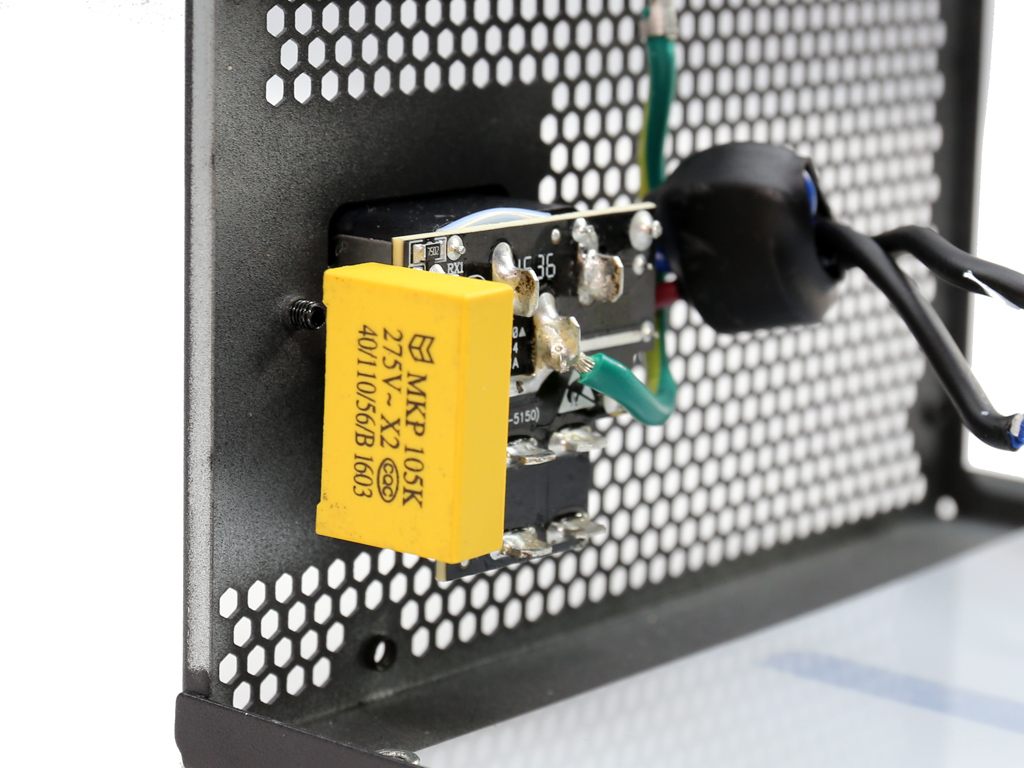
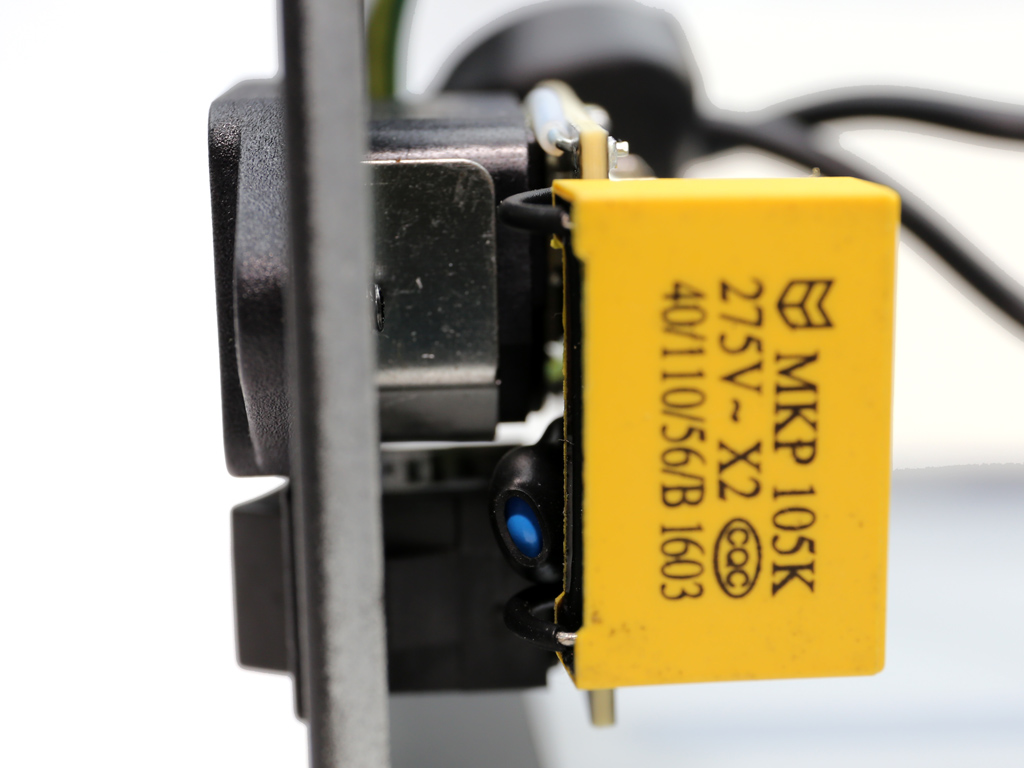
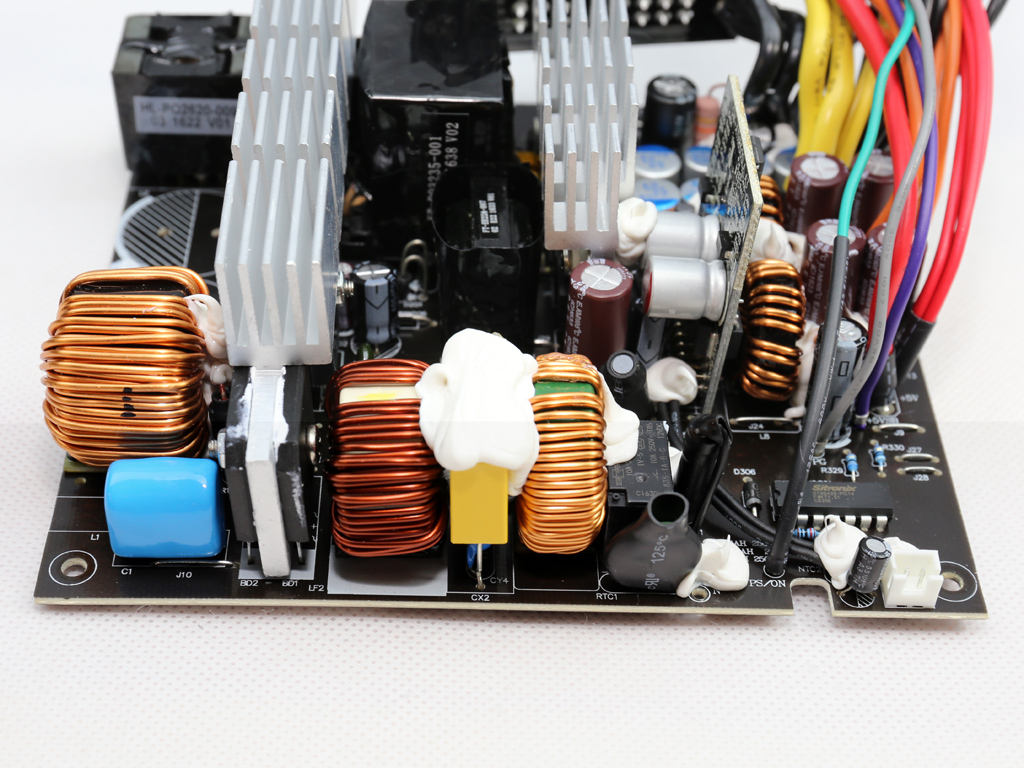
A small PCB holds the AC receptacle, the power switch, one X cap, and two Y caps. The EMI filter continues as usual on the main PCB with two CM chokes, one X cap, and a pair of Y ones. Great Wall apparently decided that an MOV (Metal Oxide Varistor) wasn't necessary. This is a great shame since MOVs protect the PSU and your other components from spikes and surges coming from the mains network.
An NTC thermistor and bypass relay form the inrush current protection circuit.
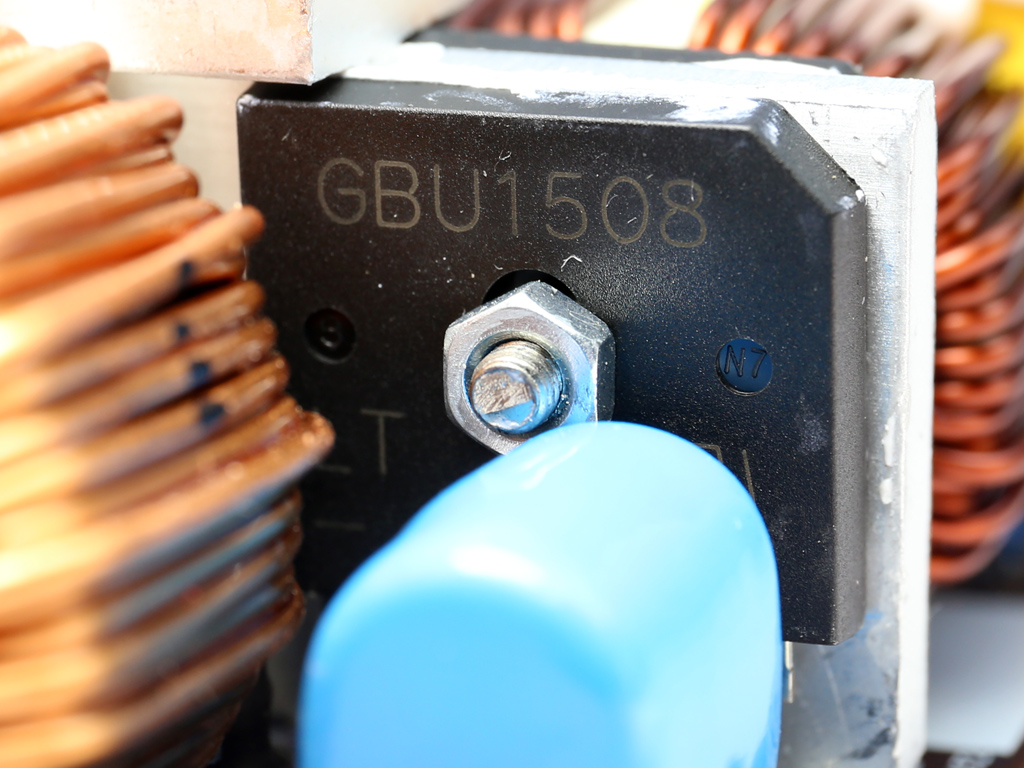
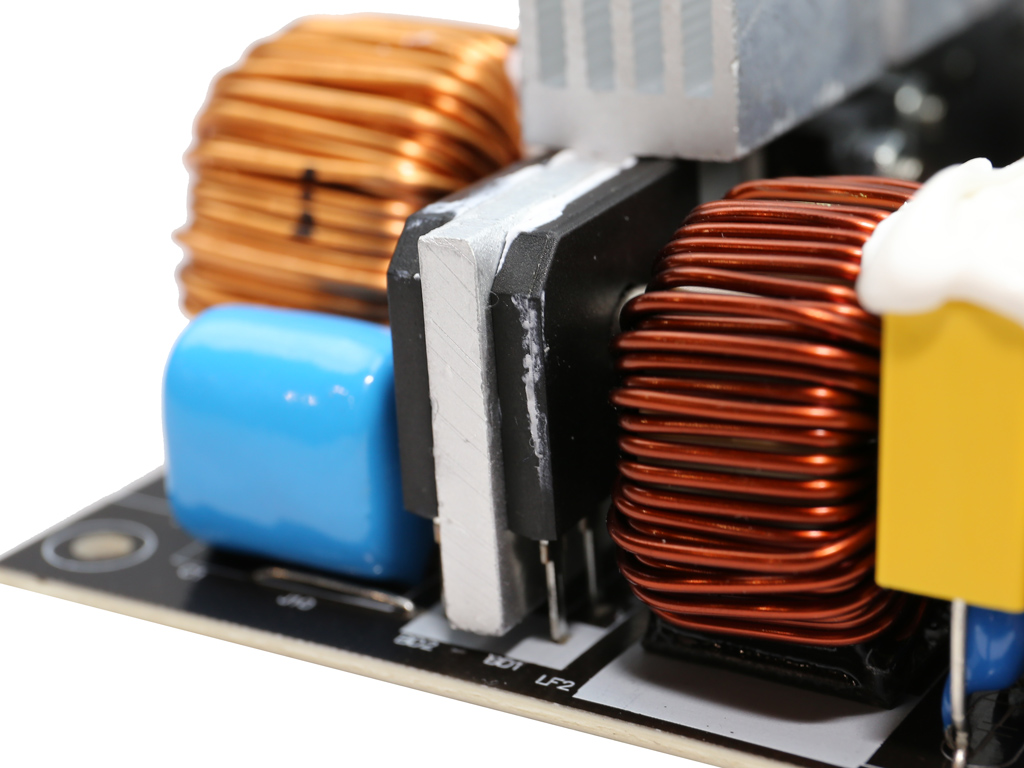
Two bridge rectifiers (GBU1508) fully rectify the AC voltage. Combined, they can handle up to 30A of current.
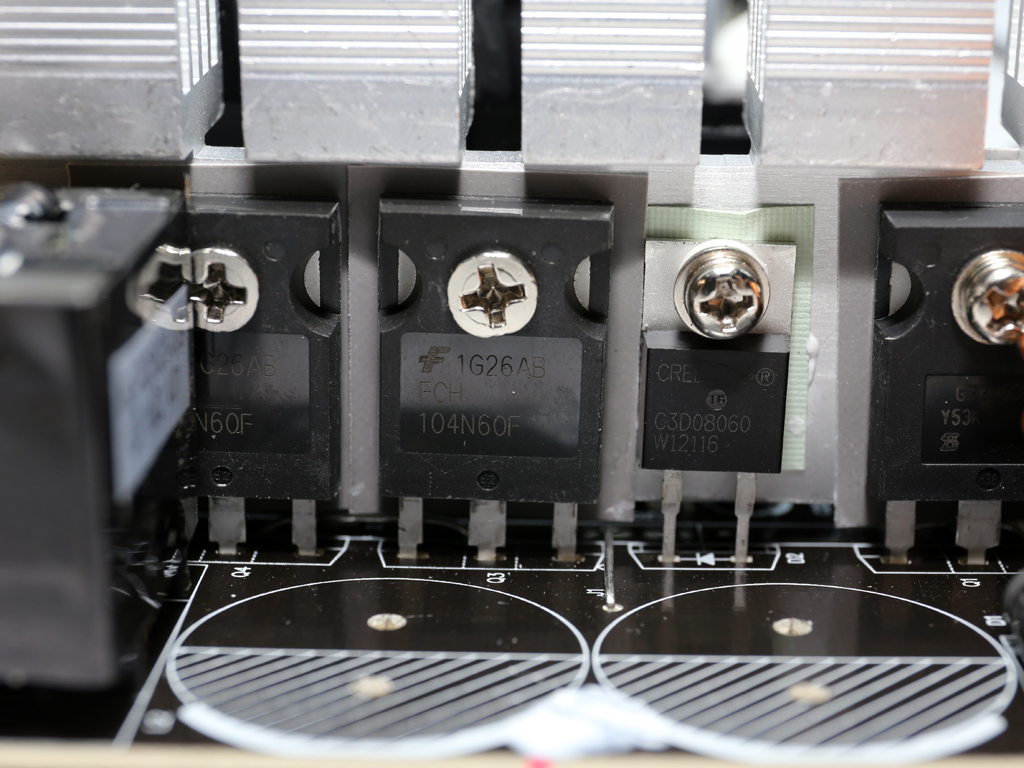
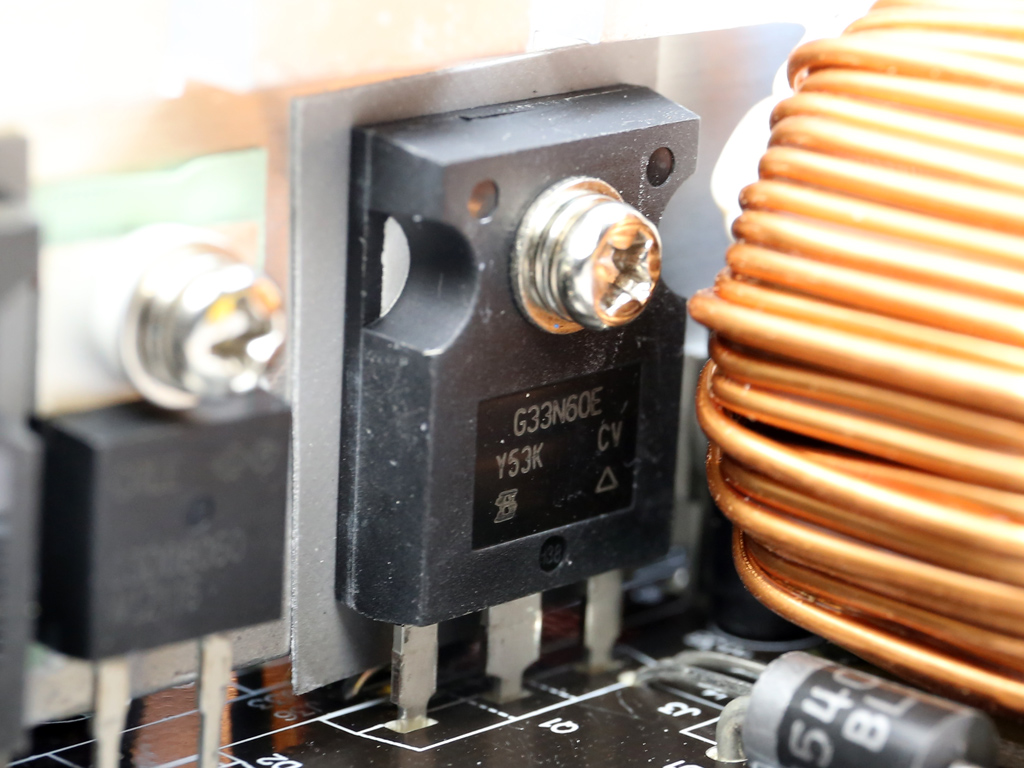
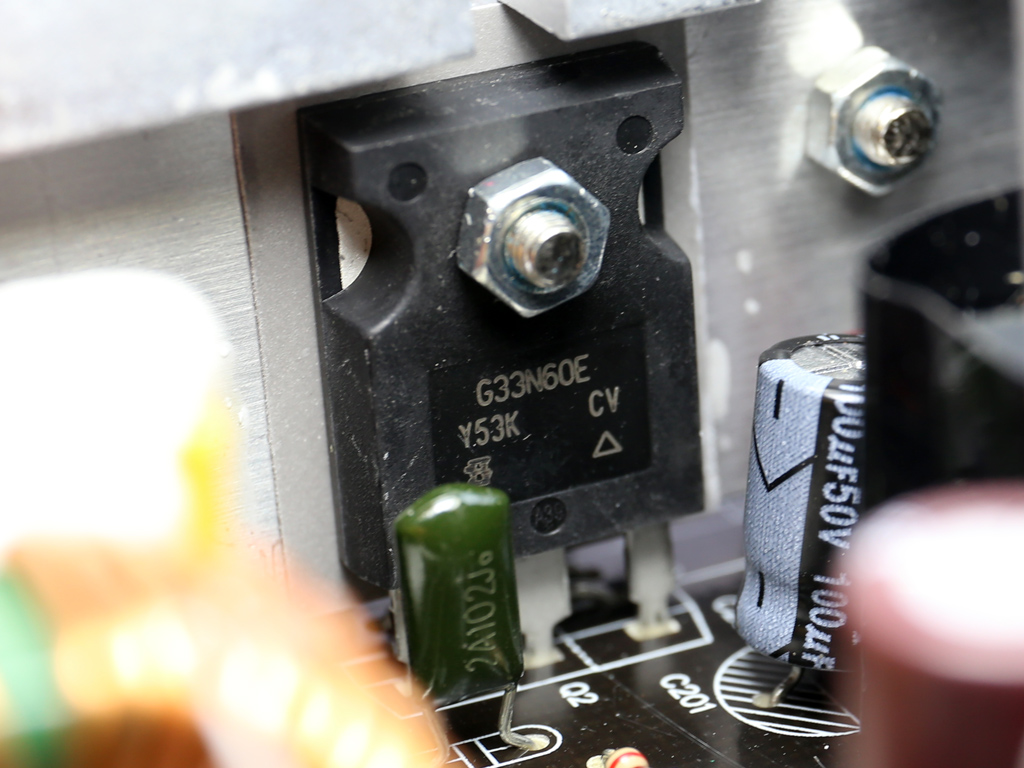
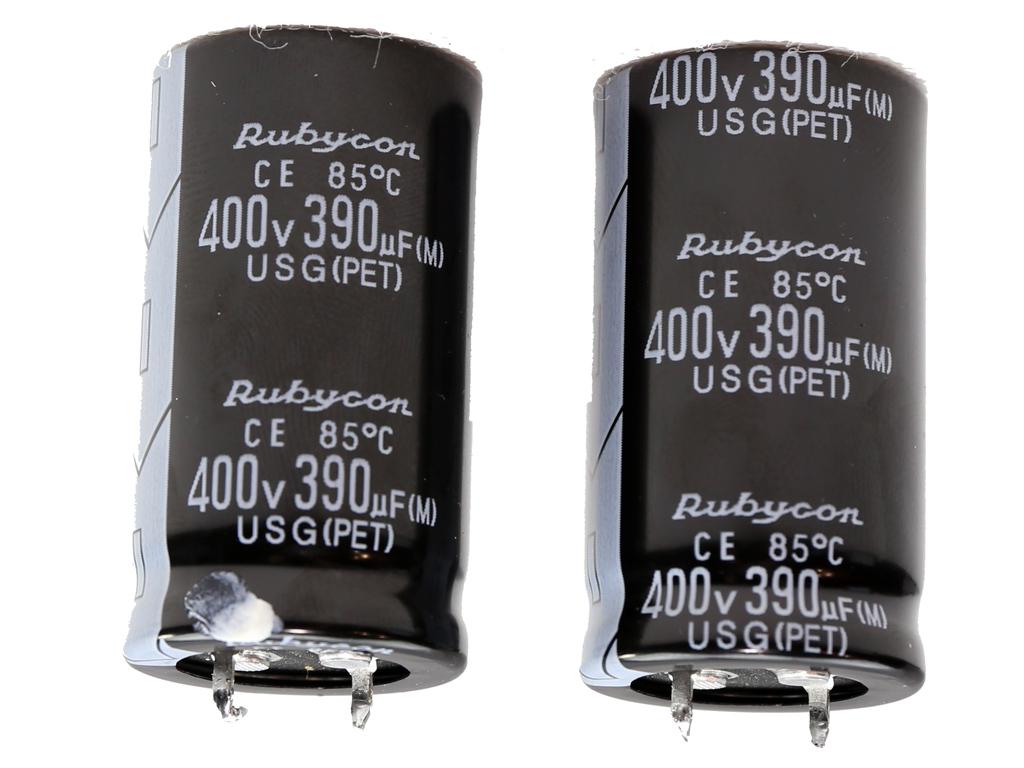
A pair of Vishay SIHG33N60E FETs are used in the APFC converter, along with a single CREE C3D08060A boost diode. The bulk (smoothing) caps are provided by Rubycon (400V, 390uF each or 780uF combined, 85°C, USG series). Although that's one of the best capacitor manufacturers, we want to see bulk caps rated for higher temperatures, even if they come from a lesser manufacturer.
Get Tom's Hardware's best news and in-depth reviews, straight to your inbox.
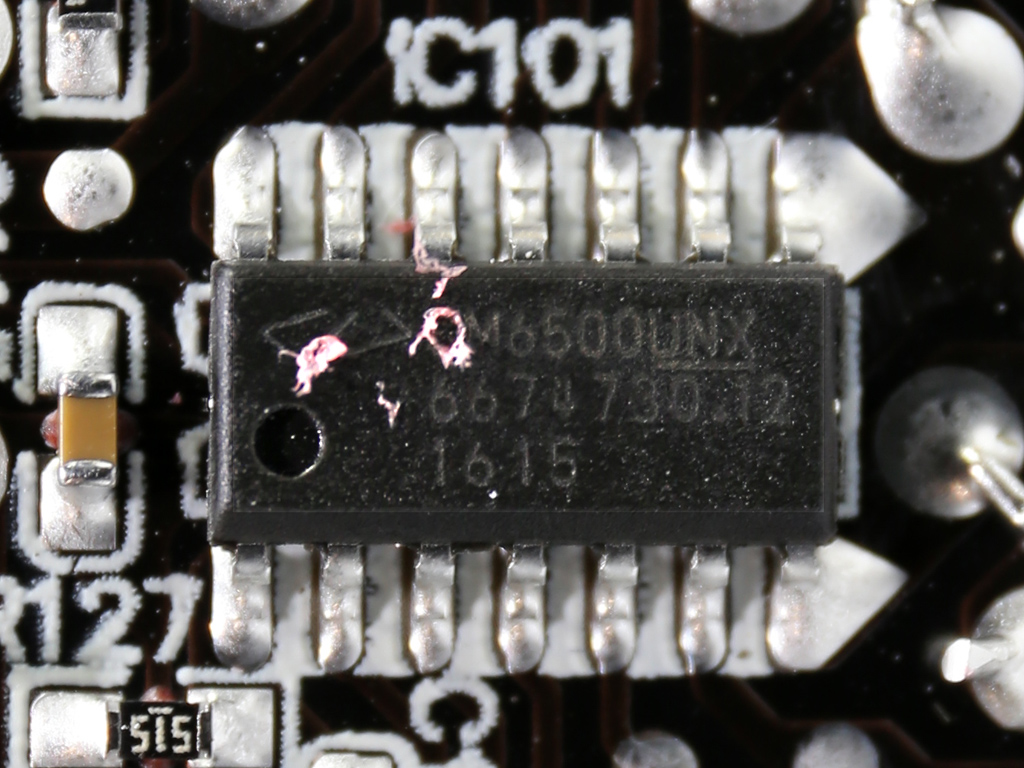
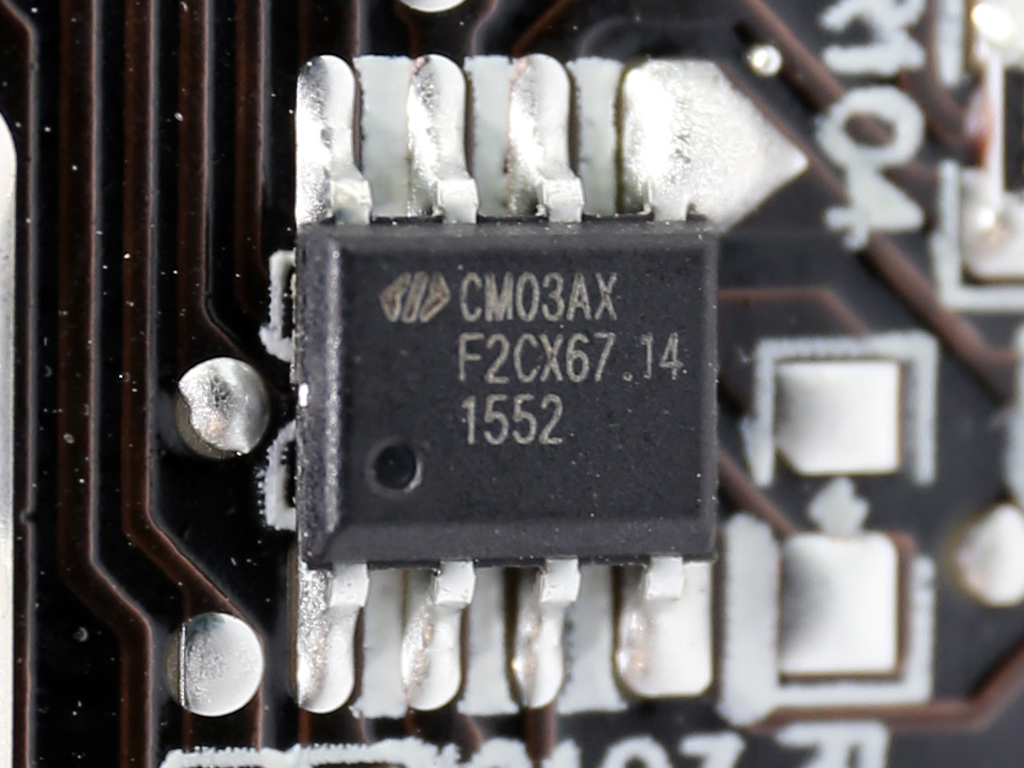
In the APFC control section we find a Champion CM6500, along with a CM03AX Green PFC controller. Both are installed on the solder side of the main PCB.
Two Fairchild FCH104N60F FETs are the main switchers, configured in a half-bridge topology.
The LLC resonant controller is a Champion CM6901X, which operates the main switchers in PWM mode under light loads and switches to FM mode at higher loads. The controller is installed on the mainboard's solder side.
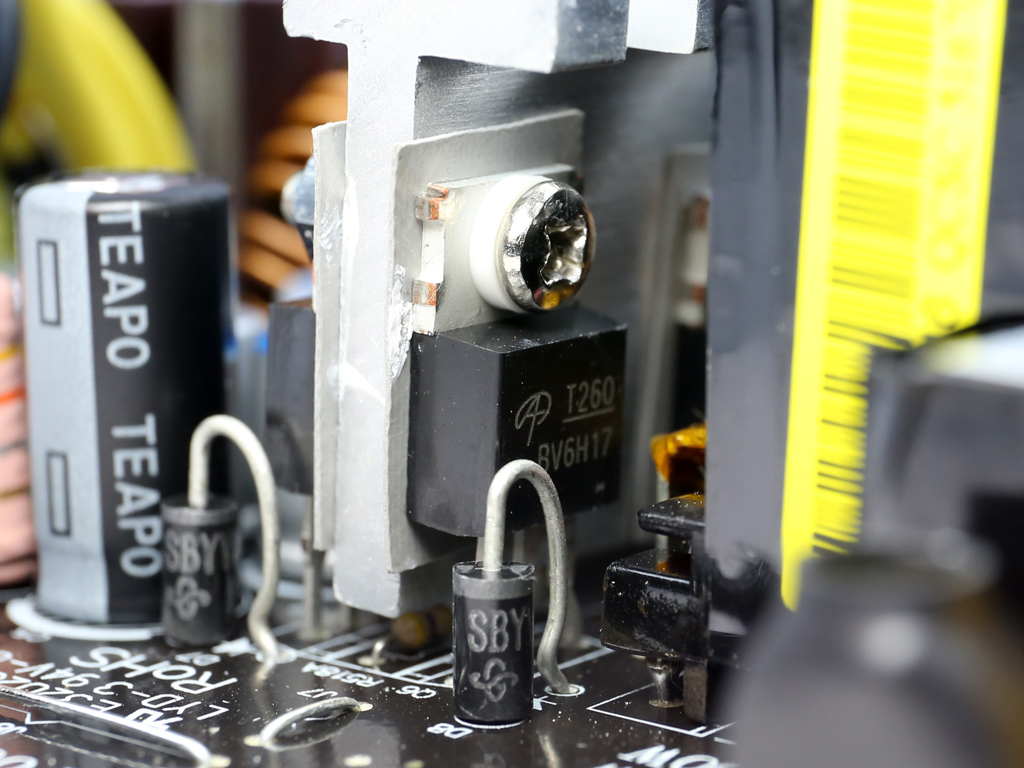
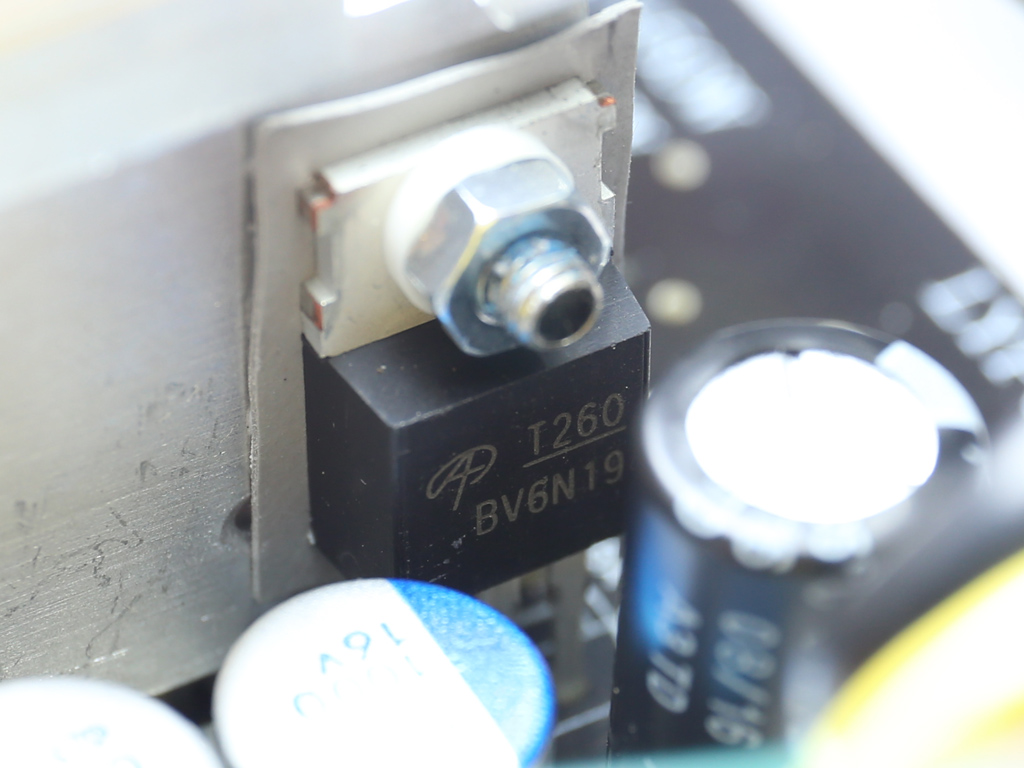
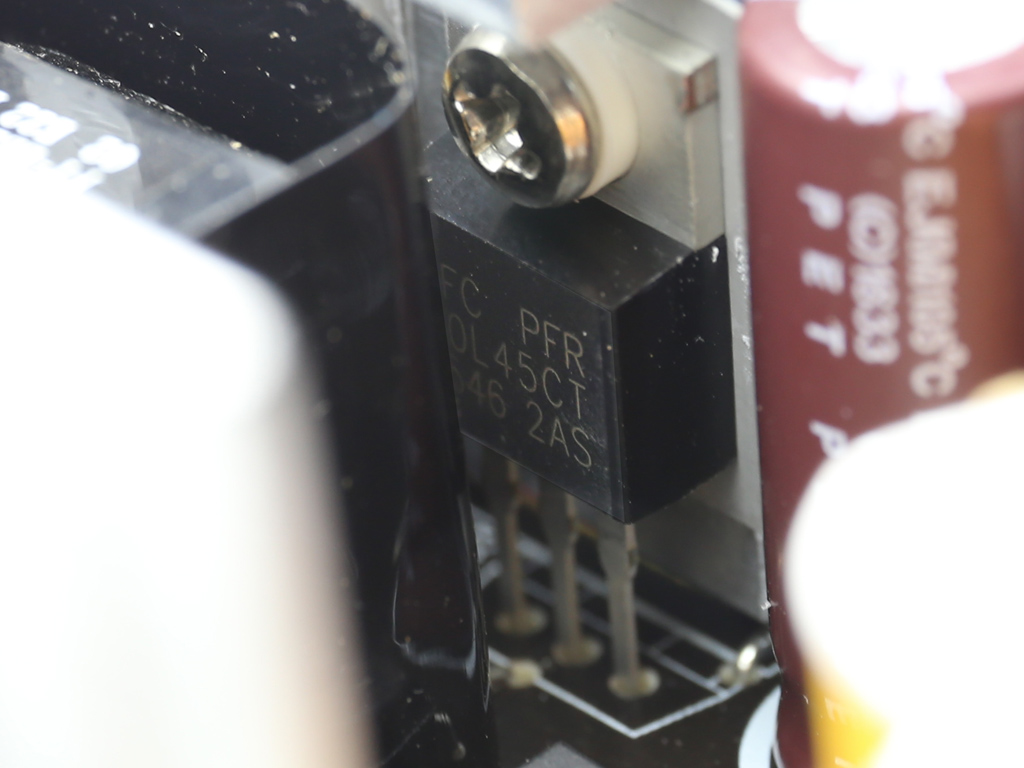
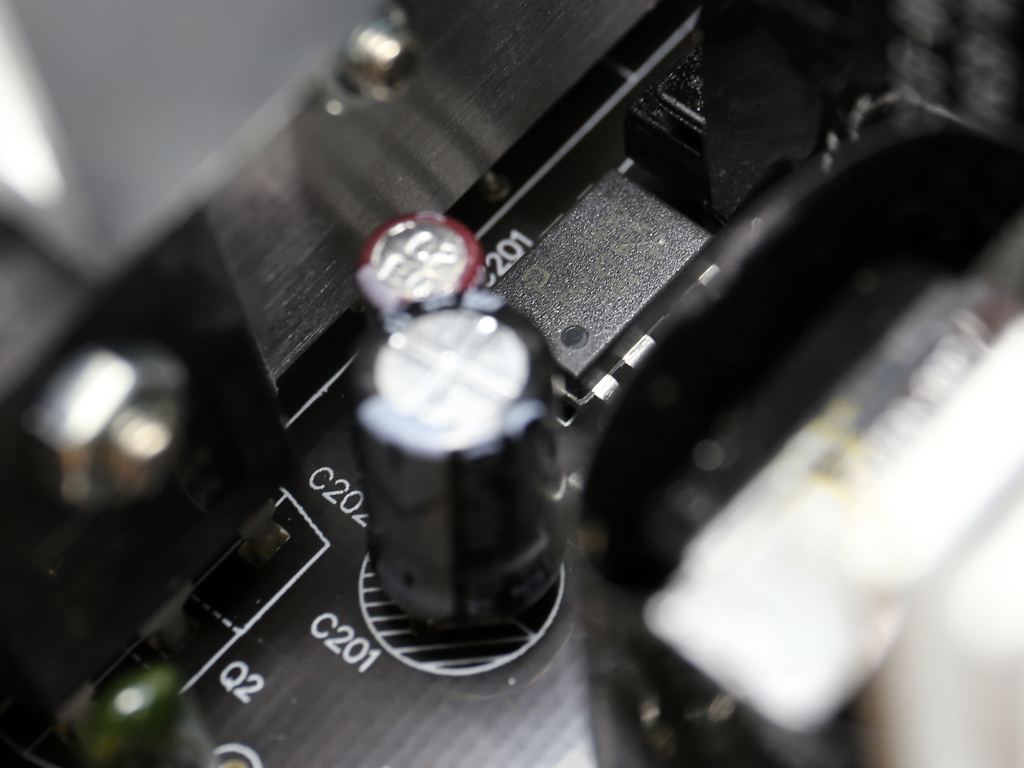
The secondary heat sink hosts four A-Power BV6N19 FETs responsible for regulating the +12V rail. On the same heat sink, a PFR30L45CT SBR (Schottky Barrier Diode) is installed to handle the 5VSB rail. The standby PWM controller is a TinySwitch-III TNY278PN.
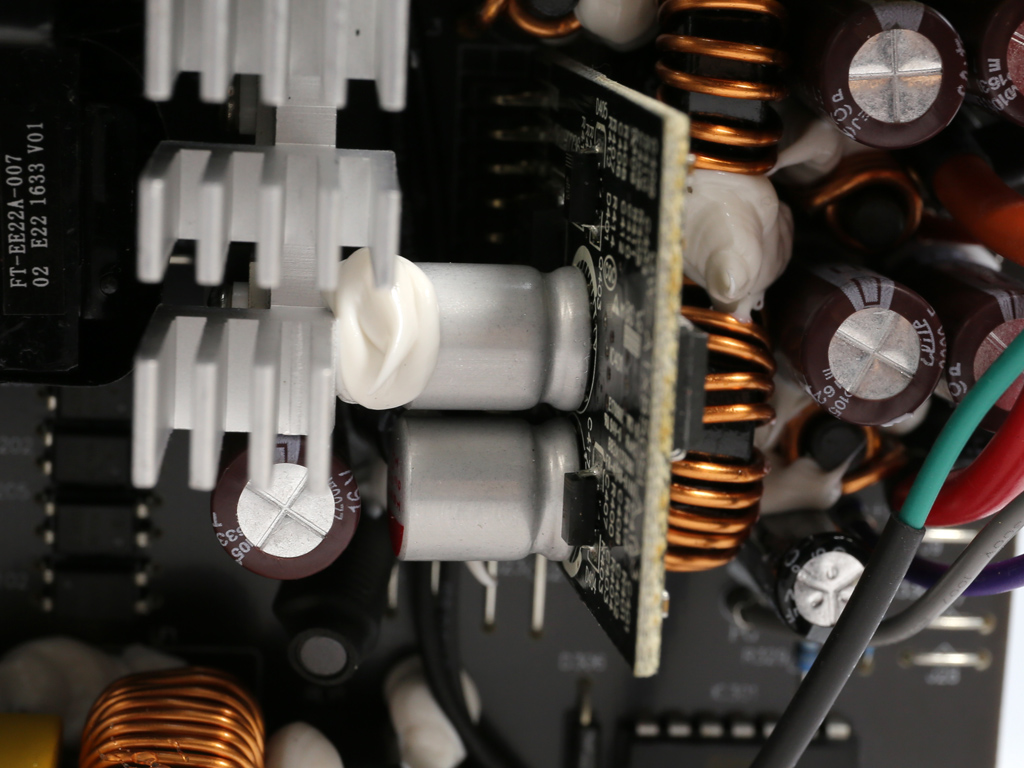
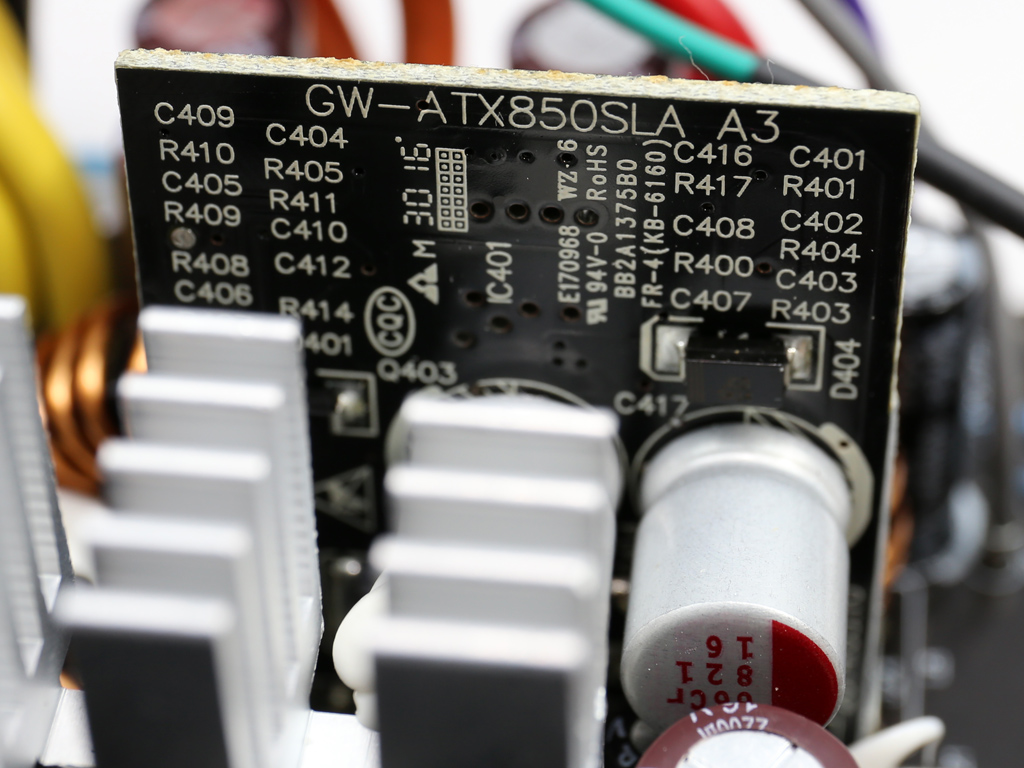
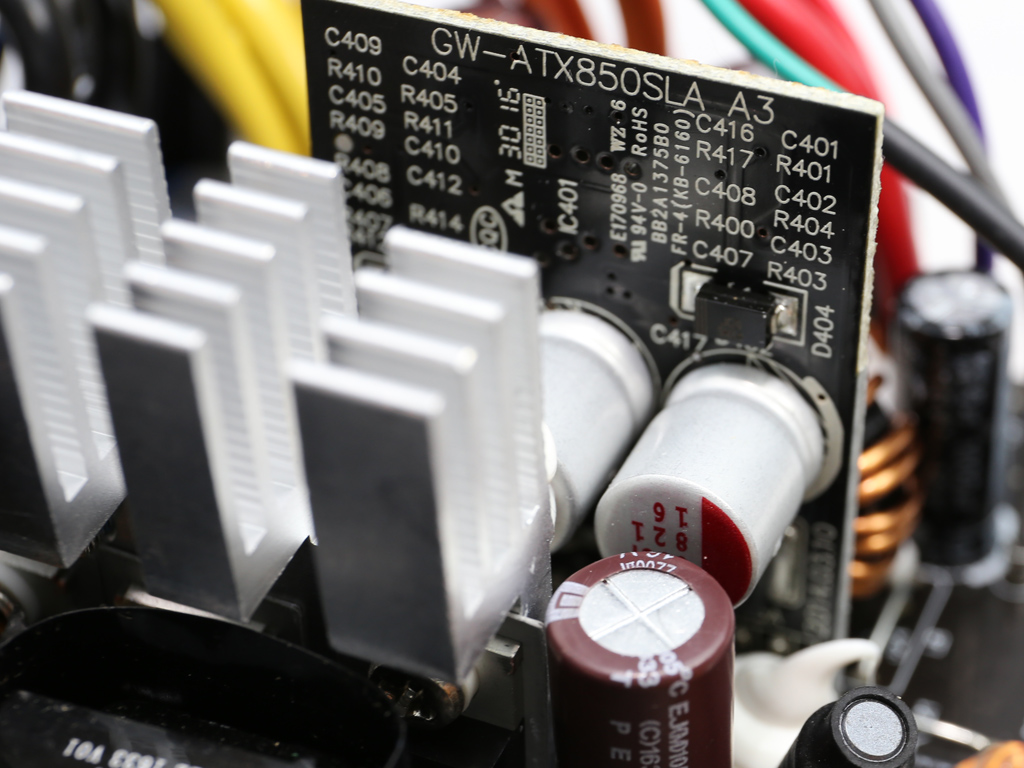
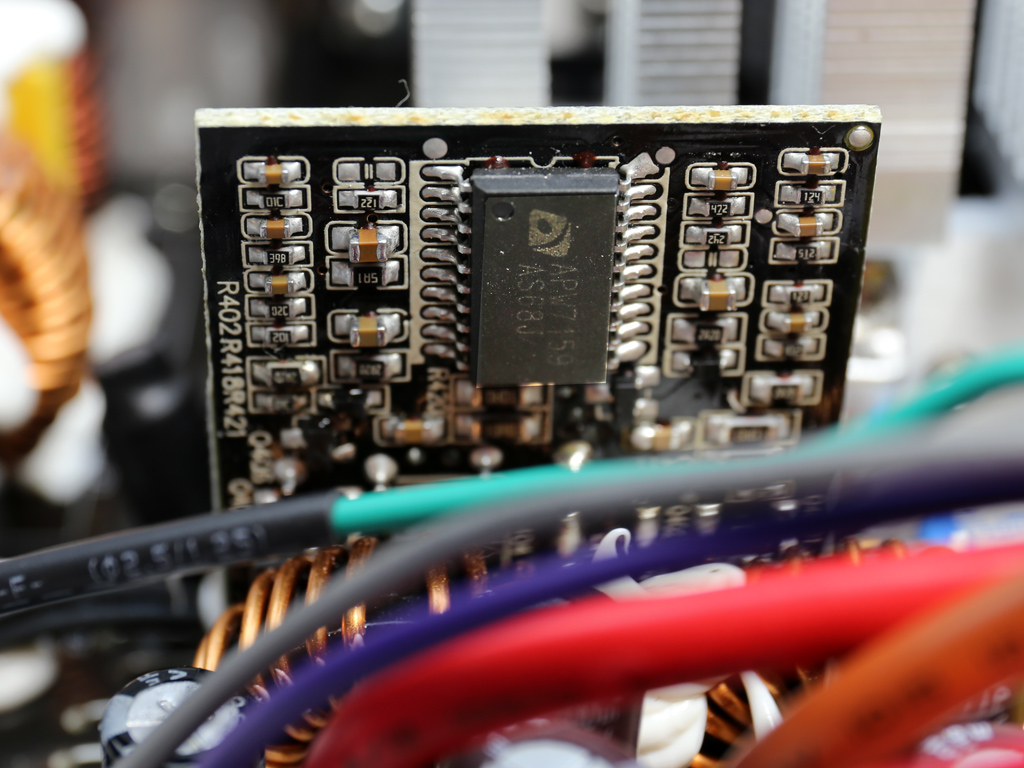
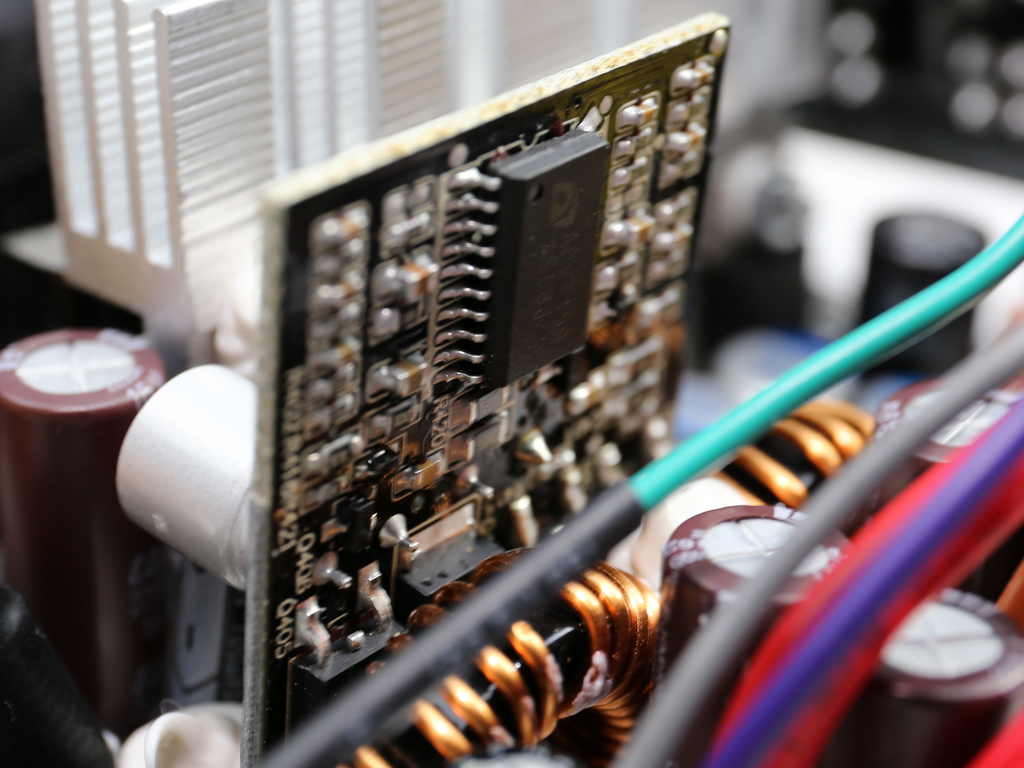
Both VRMs that regulate the minor rails are hosted on the same PCB. Each one uses two AP0403GH FETs to regulate its output, and the common PWM controller is an Anpec APW7159A. Two FPCAP polymer caps are installed on the VRM's PCB. These are used for filtering the minor rails.
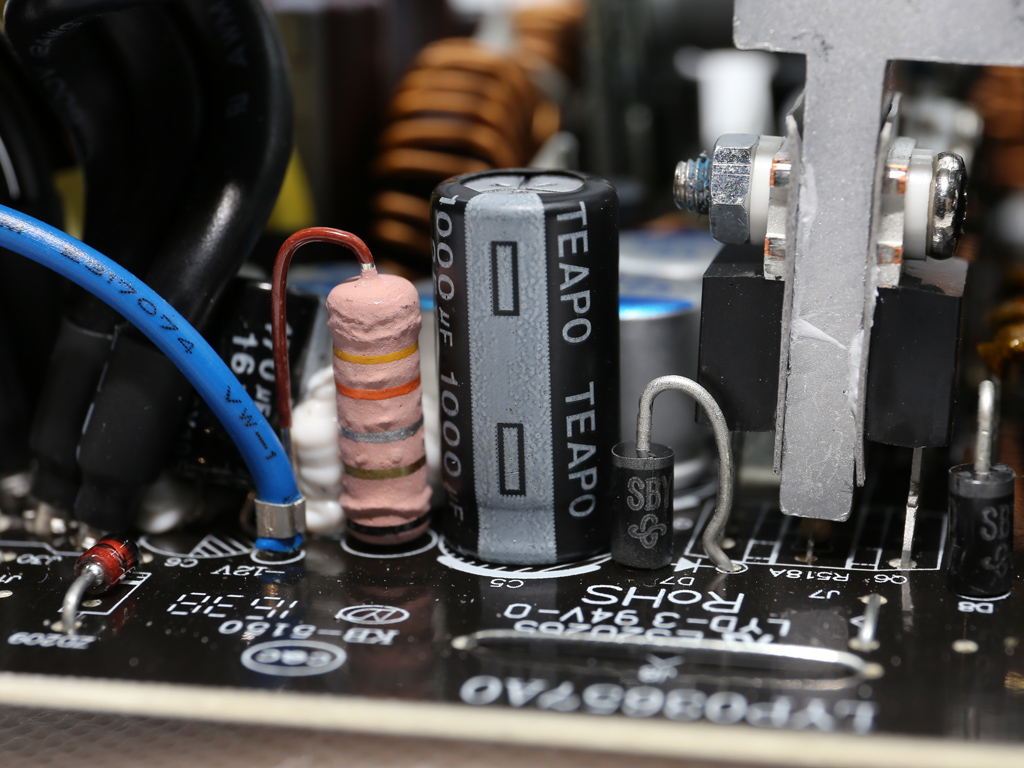
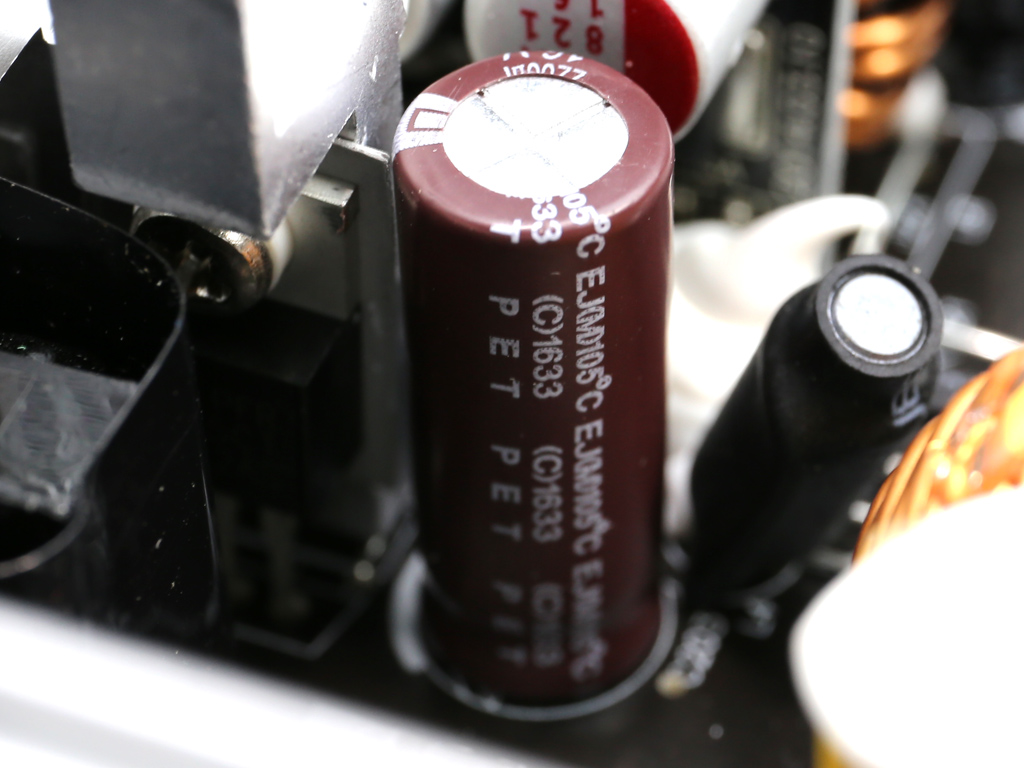
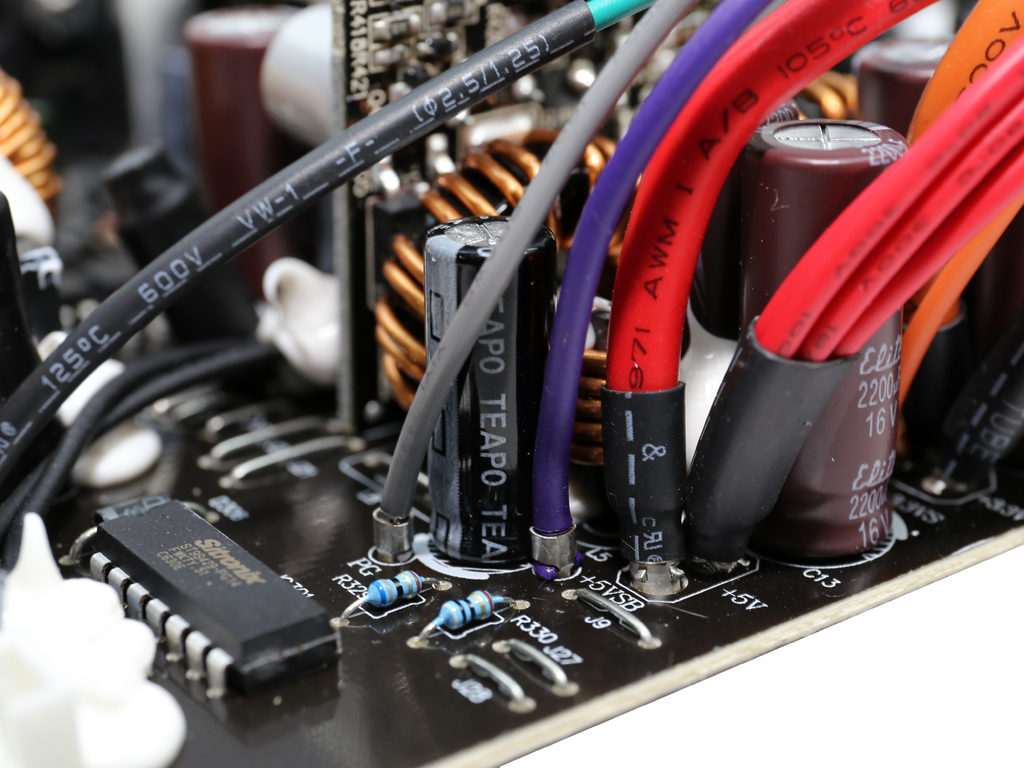
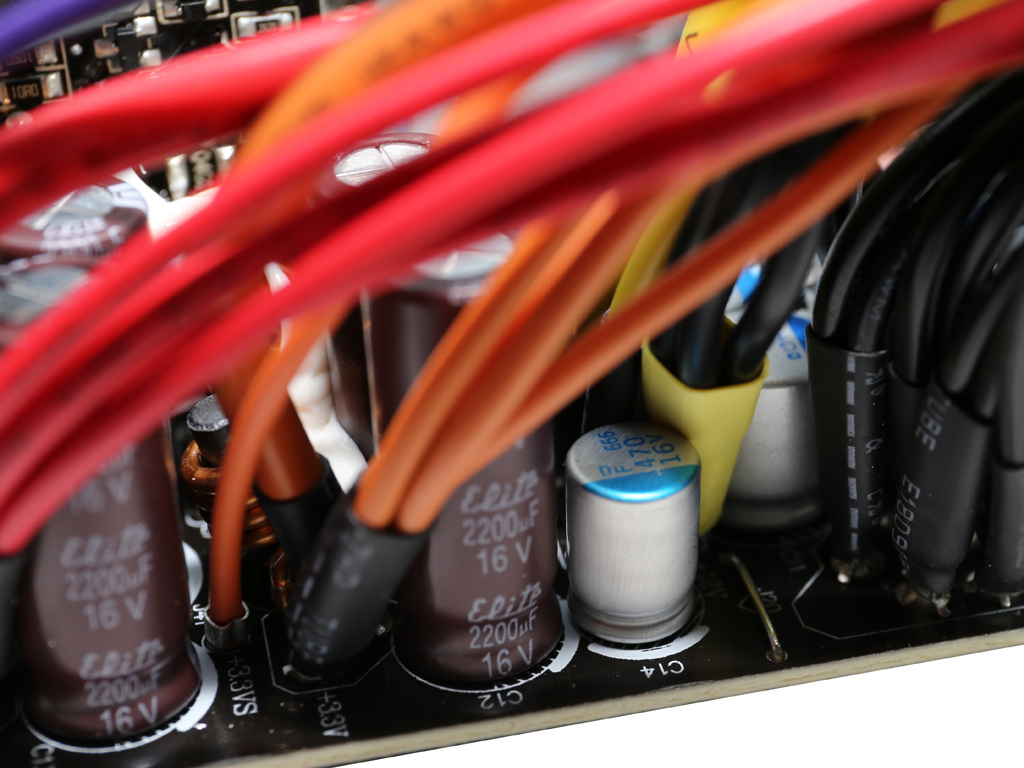
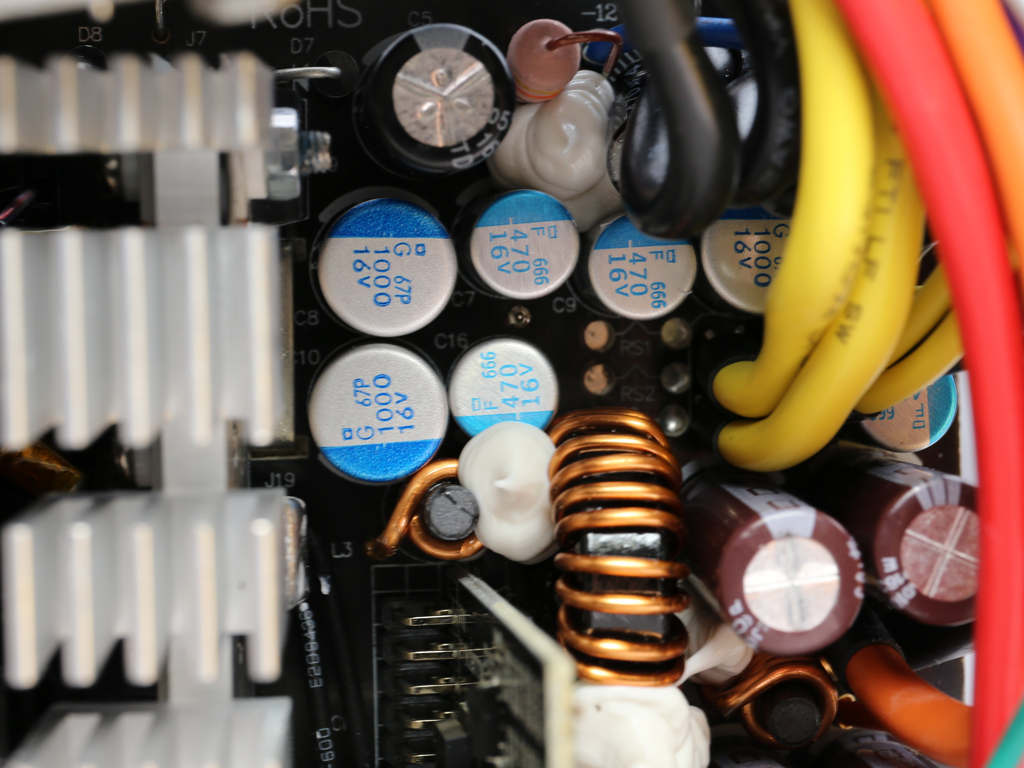
Most electrolytic filtering caps on the secondary side are provided by Elite and belong to its not-so-good EJ family. We also find several Teapo SY caps, two CapXons caps, and a single Chemi-Con (KY) capacitor. All of the electrolytics on the secondary side are rated at 105°C. Some Chemi-Con polymer caps also filter the +12V rail, and those are a nice surprise since they'll likely alleviate some of the burden from lesser-quality capacitors.
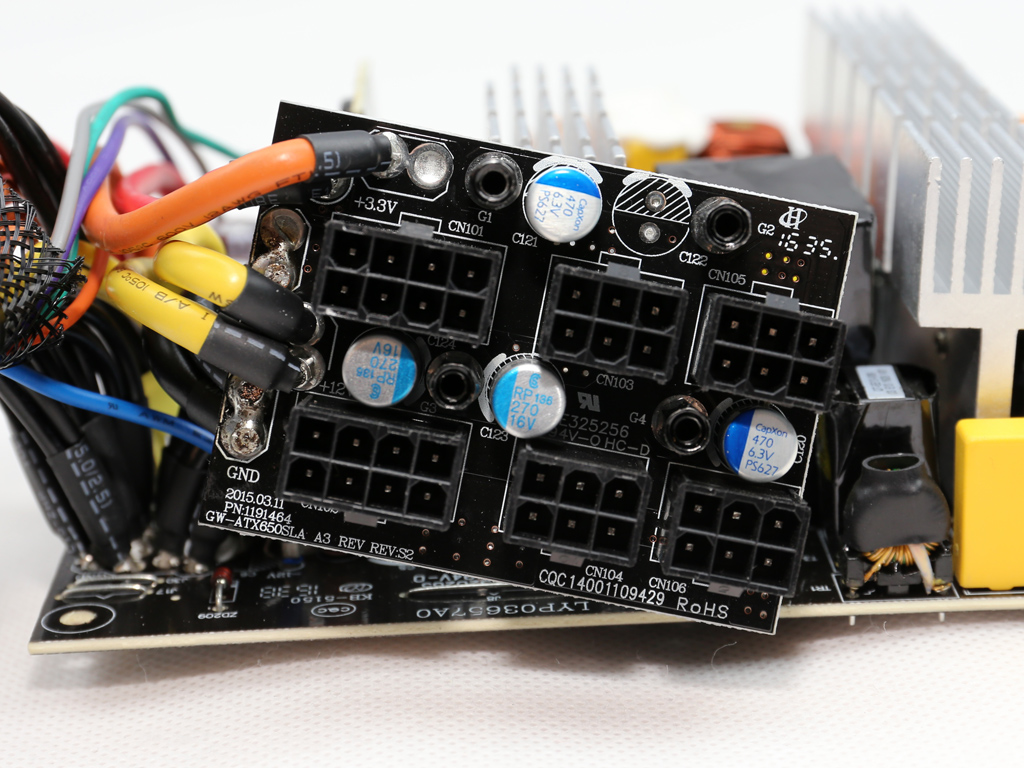
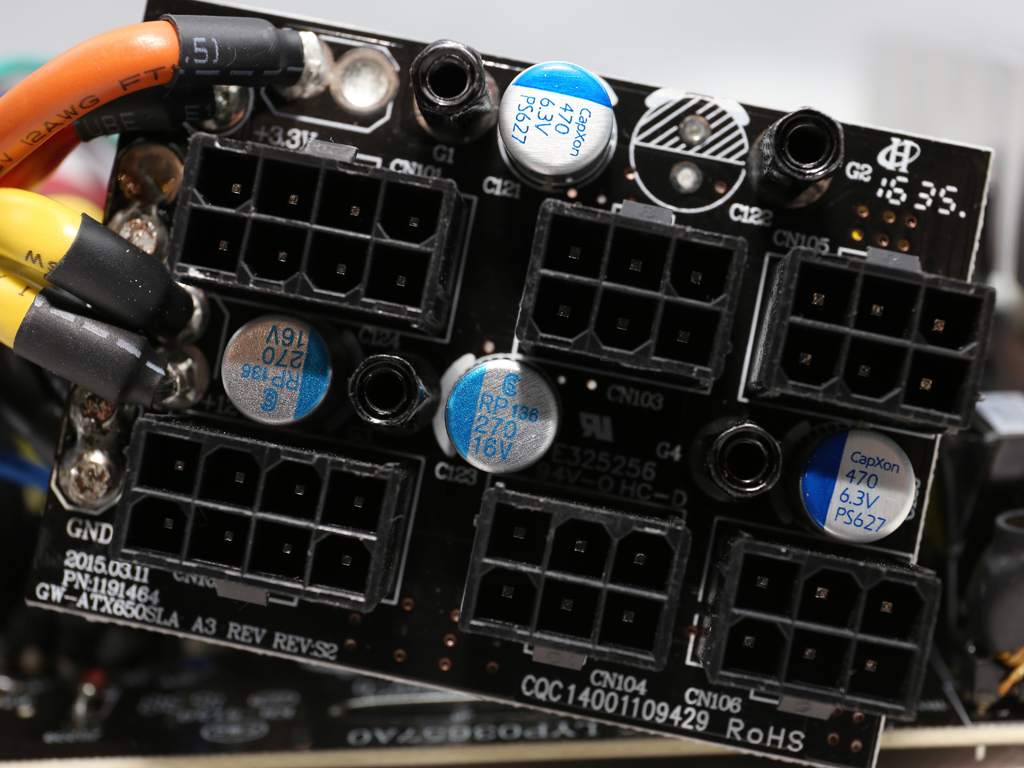
The modular board hosts four polymer caps: two CapXons and two Elites. They're used for ripple filtering purposes.
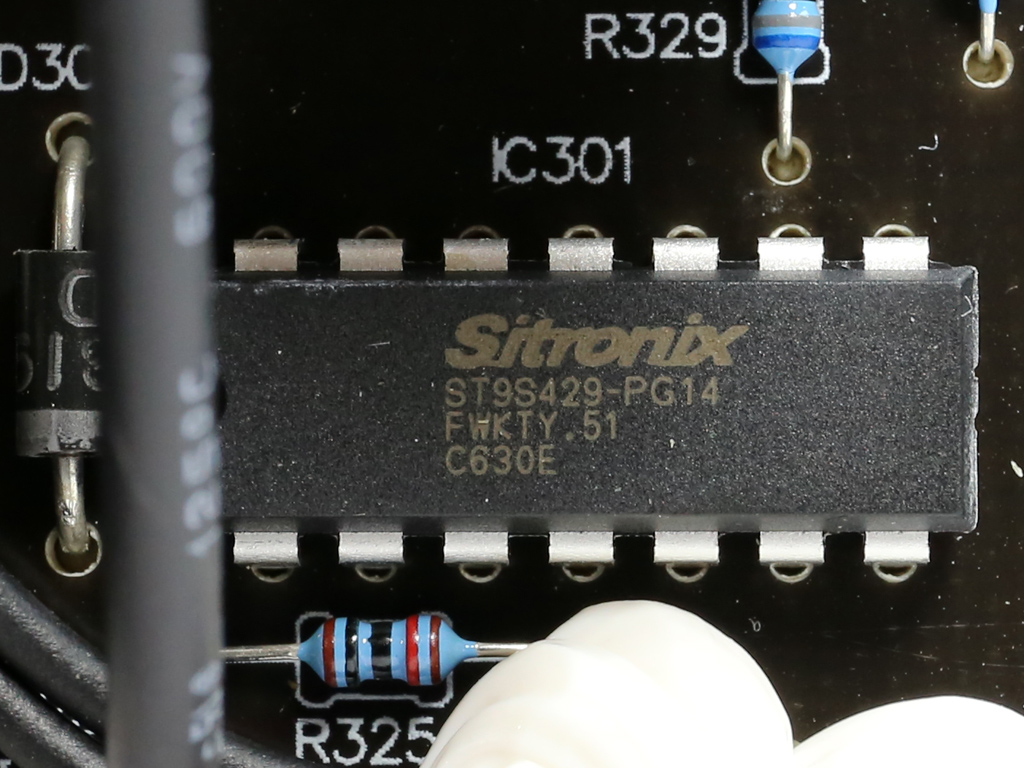
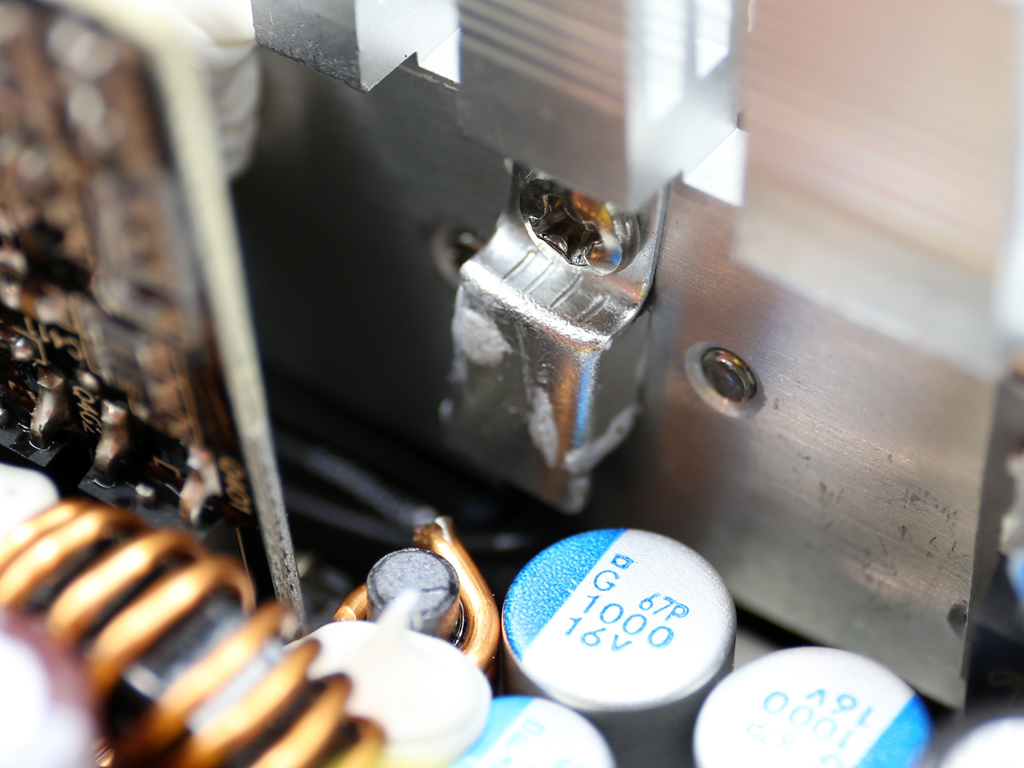
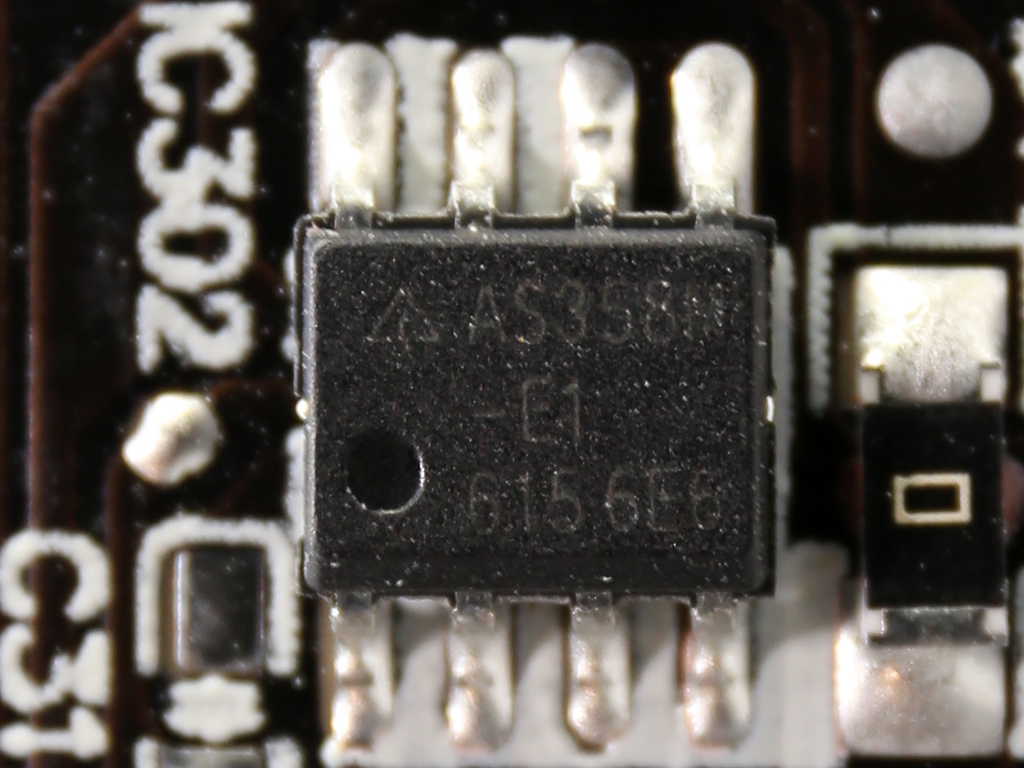
A Sitronix ST9S429-PQ14 serves as the protections IC, and it's installed on the main PCB. This is a rebadged Unisonic Technologies S3515 without over-temperature protection support, so OTP is implemented with the fan control circuit's help. A thermistor attached to the secondary heat sink is responsible for feeding temperature information. Should the internal temperature climb too high, one of the supervisor IC's protections is triggered, effectively shutting the PSU down. We tested this with our trusty heat gun, and indeed the PSU switches off when the secondary heat sink's temperature climbs above 115°C. An AS358 dual op-amp is also tied into the protection features; it's installed on the main PCB's solder side.
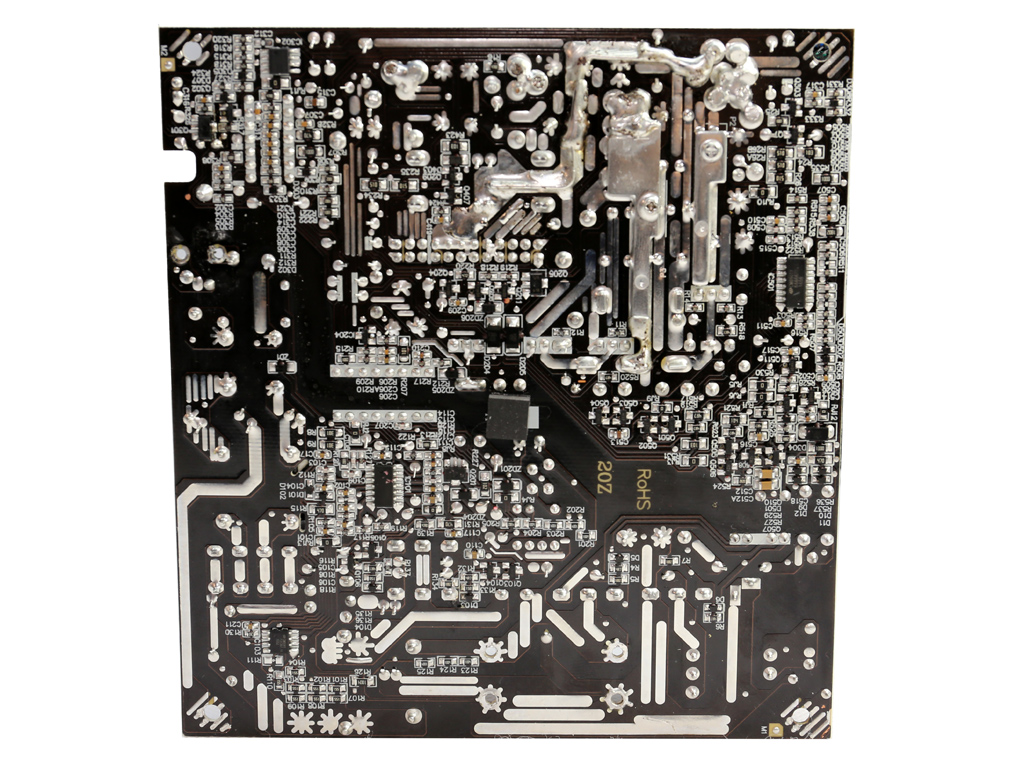
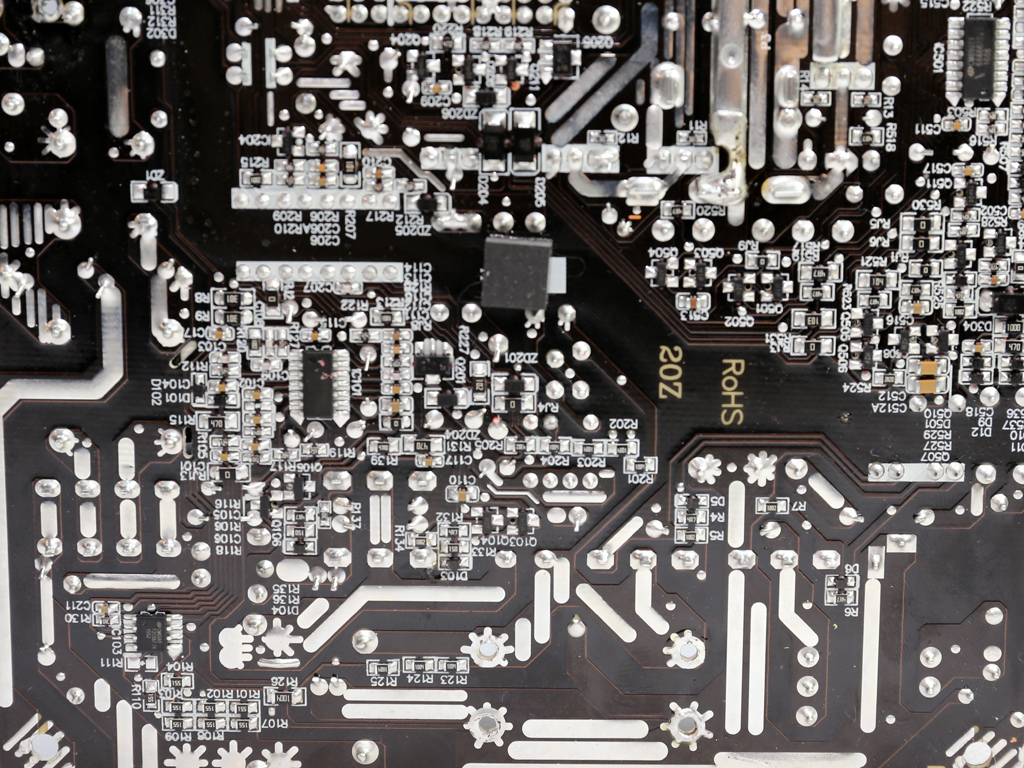
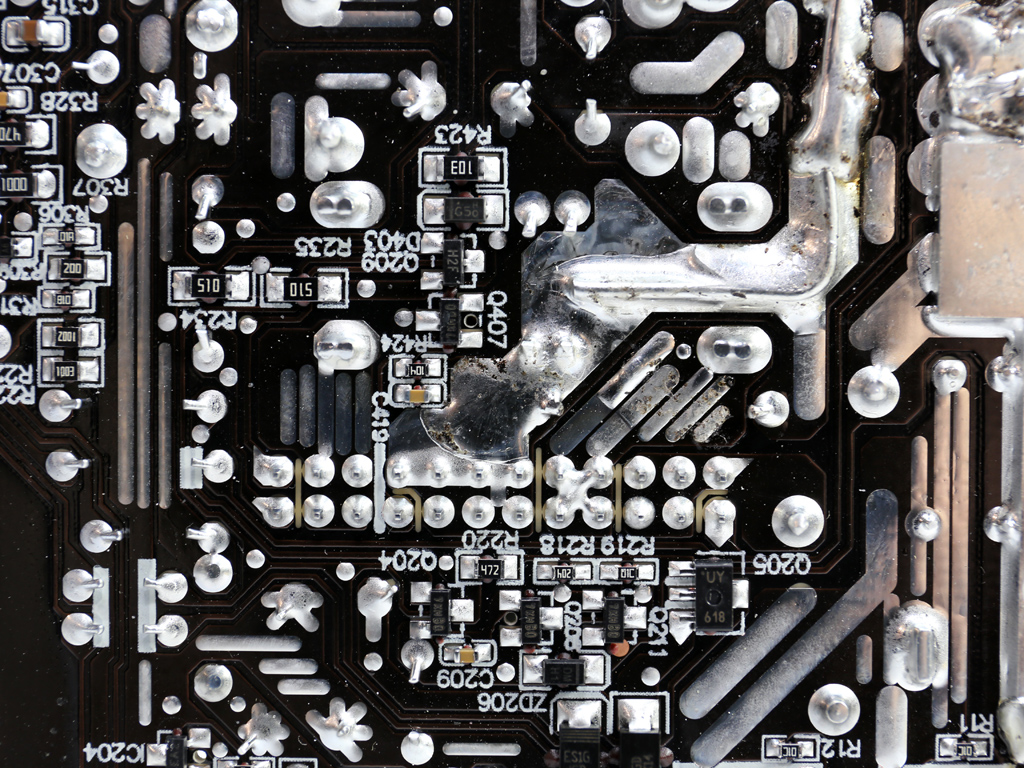
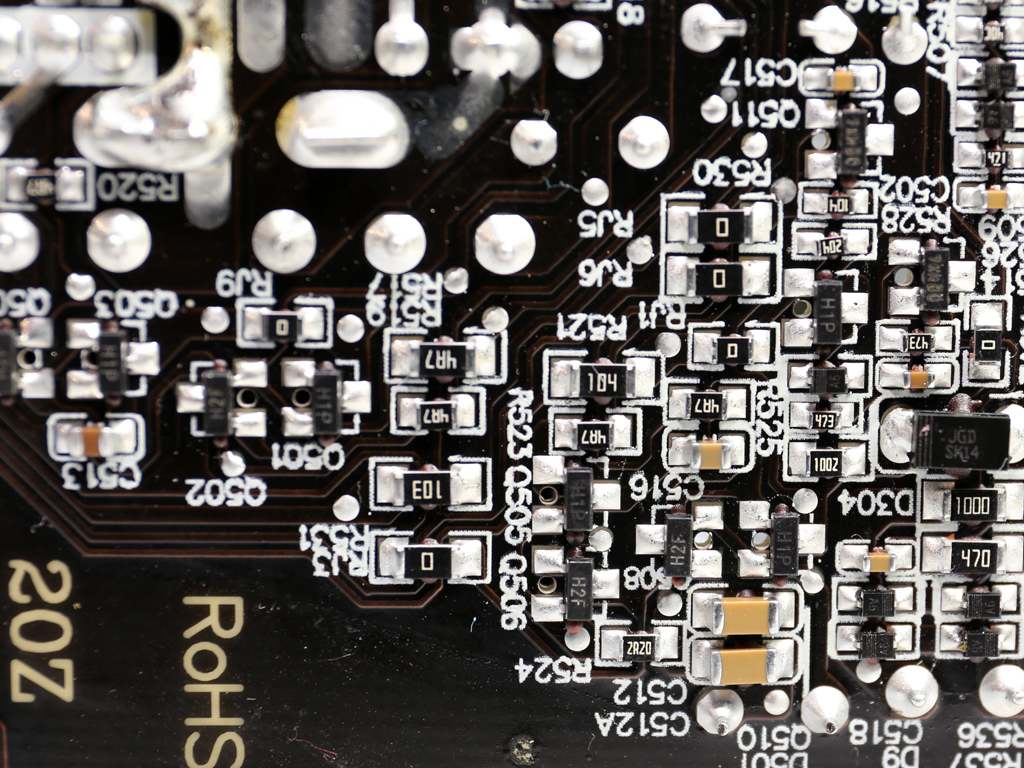
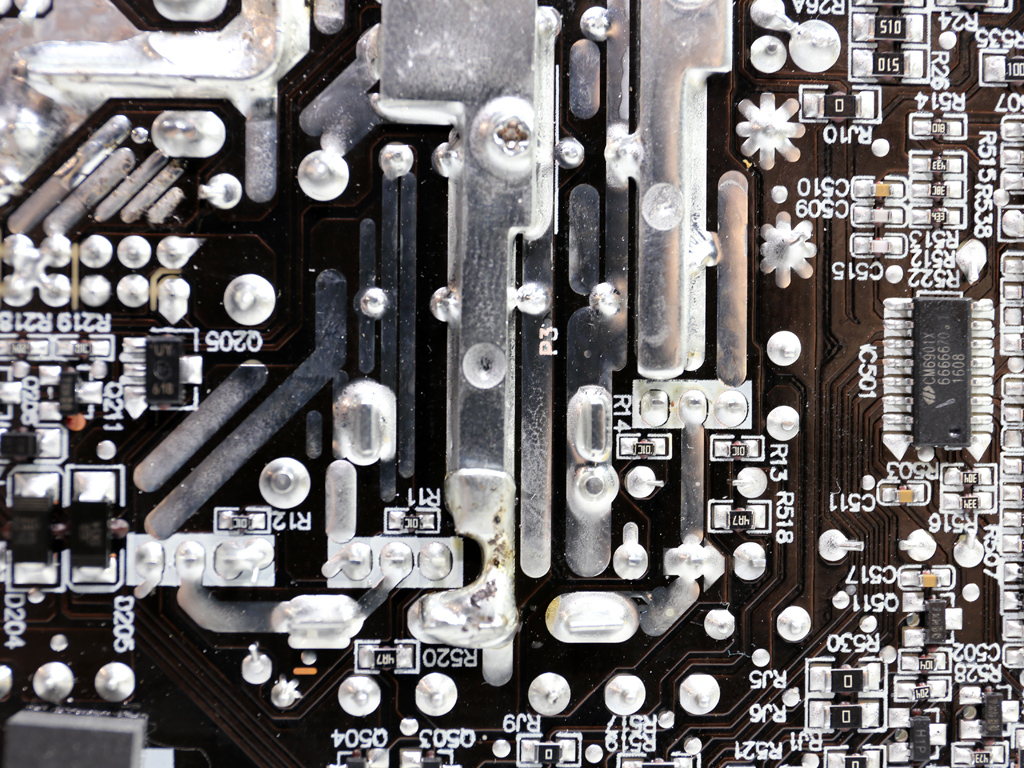
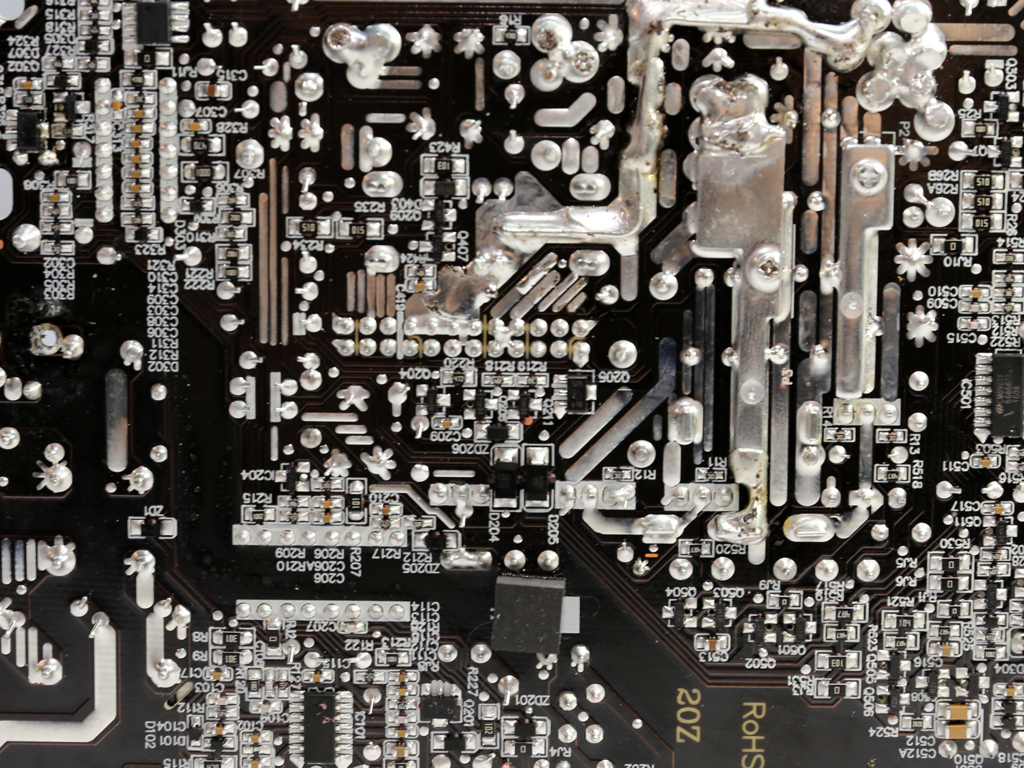
The soldering quality is decent for this price category, and we didn't spot any extra-long component leads waiting to cause a short.

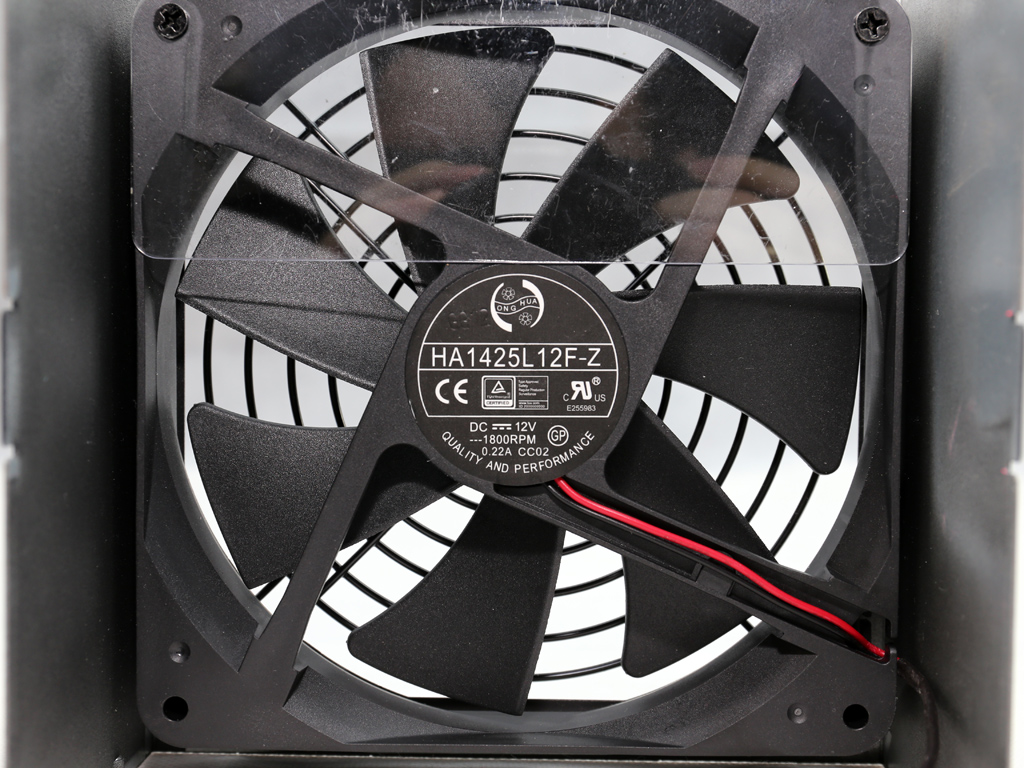
The HA1425L12F-Z cooling fan is provided by Hong Hua (140mm, 12V, 0.22A, 1800 RPM). It's a mainstream model with a sleeve bearing. That means it's quieter than a fan with the same specs and ball bearings, but it won't last as long. Riotoro's fan profile is relaxed enough to maintain low rotational speeds under normal conditions.
While we wouldn't want to guarantee a power supply for five years if it had a sleeve-bearing fan in it, remember that Corsair did upgrade the CS850M's warranty coverage to five years as well, and that PSU is based on the same platform. Then again, we're told Corsair switched to a rifle-bearing fan at the same time.
Current page: A Look Inside And Component Analysis
Prev Page Packaging, Contents, Exterior, And Cabling Next Page Load Regulation, Hold-Up Time, And Inrush Current
Aris Mpitziopoulos is a contributing editor at Tom's Hardware, covering PSUs.
